|
1st July, I will celebrate ME. The birth of ME, MYSELF and I. The person I have grown to be. The person I will become. The daughter, sister, auntie, niece, cousin, friend, wife and I am. Life does begin at 50 (not 40). Goodbye, adieu, adios, arrivederci, cheerio, sayonara, au revoir, so long 40s. Hello, howdy, bonjour, buenos dias, what's up 50. I’m no longer 40-something. I’m now a 50-somebody. I wish myself many more years of joy, love, laughter, good health and prosperity. I wish myself strength and wisdom for days to come and success with everything I do today and tomorrow. Thank you God for the gift of life and for giving me another year to live. Thank you Lord for giving me the courage and strength to face any challenges that comes my way. Thank you God for all the experience of this past year, for times of success which will always be happy memories, for times of failure which reminded me of my own weakness and of my need for you, for times of joy when the sun was shining, for times of sadness which drove me to you. Rob… Thank you for always making me happy. I feel like every day is my birthday. You are the most loving, caring, affectionate and dependable husband. Thank you for encouraging me to follow my heart and do what I love to do. Thank you for supporting my passion and interest in writing and photography. Thank you for believing in me. Thank you for always bringing out the best in me. Thank you for being my number one fan, my staunch supporter, my most loyal ally. You are truly my rock and the wind beneath my wings. I love you for loving me tremendously. Daddy Leon and Mommy Angie… Thank you for being the best parents a child could ever ask for. Thank you for your unconditional love and endless care. Thank you for making sure I have a wonderful and memorable childhood. Thank you for supporting my every endeavor and encouraging me to do my best in everything I do. Thank you for your advice and wisdom. I am who I am today because of you. Thank you for nurturing me into the woman I am today. Thank you Mommy Angie for giving birth to this awesome, amazing, brilliant and smart child. Thank you brother Russel, sis-in-law Myla, nephew Gabriel and Miguel, sistah Rachel for all your love and care, thoughtfulness and generosity. Thank you for always sharing your blessings. Thank you for looking after my best interest. Thank you for always having my back. Thank you my dear friends from the University of the East College of Dentistry and Manila Central University College of Dentistry for the friendship. You made my Dentistry days so much fun and enjoyable, wonderful and memorable. You coloured my world. Thank you BFF Nelinda Cupino for the friendship, for always being there for me eventhough we're miles away. Thank you my lovely Soroptimist friends Maggie Hamilton, Jane Bridges and Kay Turner for your friendship, kindness and thoughtfulness. I really appreciate you. You're the sweetest. Thank you my good friends Paul Miles and Dawn Miles for your thoughtfulness and generosity. You are truly the most dependable and most helpful friends. Thank you my good friends Lee Slaughter, Russell Hemmings and David Conway for taking me to Cerne Abbas, Dorset to see the Duke of Burgundy butterfly; Fontmell and Melbury Downs, Dorset to see the Glanville Fritillary, Adonis Blue butterfly and Small Blue butterfly and Daneway Banks to see the Large Blue butterfly. Five butterflies now tick off my list. Thank you to all my family, relatives and friends who remembered my special day... for the cards, gifts and good wishes. I'm forever grateful. The big FIVE-OH. My golden year is here. I had five decades of an amazing life. But I’ll go and make this one the best year yet. I hope I will live them to the fullest, starting today. The older you get, the more you shine. Here's to 50 amazing years on earth! Cheers! 50 for 50
0 Comments
There are 59 Butterflies in the UK, 57 resident and 2 regular migrants. There are 36 Butterflies in Cornwall, 34 resident and 2 regular migrants, 1 introduced / re-introduced and 1 extinct. I've already seen 46 butterfly species and photograph 44. I have to see 13 more and photograph 15. Fingers-crossed, I will be able to see a few more this year. Resident ButterfliesRegular Migrant ButterfliesRare Migrant ButterfliesImportance of Butterflies1. Butterflies are important and valuable pollinators. 2. Butterflies are indicator of a healthy environment. 3. Butterflies are part of the food chain, they act as a food source for birds, bats, reptiles, amphibians and others. 4. Butterflies act as natural pest control. 5. Butterflies make us happy. David Attenborough says spending time in nature, even just watching butterflies in your garden, is good for our mental health. 6. Butterflies gives colour to our environment. 7. Others... Life Cycle of a Butterfly1. First Stage: Embryonic Stage – Egg (3-5 days) A butterfly starts its life as an egg, often laid on a leaf. The eggs come in many shapes and colours. The shapes include spherical, oval, and pod-shaped; the colours include white, green, and yellow. The eggs have a thin, tough, protective shell, the chorion. This shell has raised ribs or pits (reticulations). The length of time required for the egg to hatch is dependent on the species and the environmental. Some species lay winter-hardy eggs in the fall, which hatch the following spring or summer. 2. Second Stage: Caterpillar Comes Out! (5-10 days) The caterpillar or larva hatches from an egg and eats leaves or flowers almost constantly. The caterpillar will increase up to several thousand times in size before pupating. When a caterpillar gets too big for its skin, it molts or sheds its old skin and keeps eating more. 3. Third Stage: Chrysalis - Metamorphosis Begins (7-10 days) The chrysalis or pupa is the stage in a butterfly's life when it is encased in a chrysalis and undergoing metamorphosis. Wings develop during this stage. About a day before the adult butterfly emerges, the chrysalis becomes transparent. 4. Fourth Stage (Imaginal Stage): Butterfly Emerges! (2 weeks) A beautiful, flying adult emerges. This adult will continue the cycle. The adult is also called the imago, emerges from its pupal cuticle with a swollen abdomen and shrivelled wings. For the first few hours of its adult life, the butterfly will pump hemolymph into the veins in its wings to expand them. The waste products of metamorphosis, a reddish liquid called meconium will be discharged from the anus. Food SourceButterflies eat, much better word is drink through their proboscis – a tube that works a bit like a straw. But they actually taste using their feet! 1. Nectar The butterfly’s primary source of food is nectar. It gets nectar from plants and flowers like 2. Old Fruit Butterflies love a sweet treat. You can leave out an overripe banana. Alternatively, if you have fruit trees in your garden, leave fallen fruit on the ground. Butterflies seem to have a particular taste for pears, plums and apples. 3. Sugar Solution Butterflies are often sleepy when they first wake from their cocoons or from hibernation in the spring. If you come across a butterfly struggling to get going, you can prepare a boiled then cooled mix of sugar and water. Use a brightly coloured sponge to soak up the solution. A butterfly will take sips from it and get the boost it needs to take flight. 4. Muddy Puddles The glucose in nectar and fruit gives butterflies their energy. But butterflies also require other nutrients. That’s why you may sometimes see them crowded around a muddy puddle. By sipping from the puddle they take in minerals and salts from the soil, which are thought to be important for reproduction. By including a few of these food sources in your garden, you can attract butterflies for the whole of the season, making your garden into a festival of colour and life. Butterfly in Different LanguagesCornish - Tykki Duw French - Papillon German - Schmetterling Ilocano - Kulibangnag Irish - Feileacan Italian - Farfalla Latin - Papilio Portuguese - Borboleta Spanish - Mariposa Tagalog - Paruparo Butterflies in the UKResident Butterflies: 1. Adonis Blue Polyommatus bellargus 2. Black Hairstreak Satyrium pruni 3. Brimstone Gonepteryx rhamni 4. Brown Argus Aricia agestis 5. Brown Hairstreak Thecla betulae 6. Chalk Hill Blue Polyommatus coridon 7. Chequered Skipper Carterocephalus palaemon 8. Comma Polygonia c-album 9. Common Blue Polyommatus Icarus 10. Cryptic Wood White Leptidea juvernica 11. Dark Green Fritillary Argynnis aglaja 12. Dingy Skipper Erynnis tages 13. Duke of Burgundy Hamearis lucina 14. Essex Skipper Thymelicus lineola 15. Gatekeeper Pyronia tithonus 16. Glanville Fritillary Melitaea cinxia 17. Grayling Hipparchia semele 18. Green Hairstreak Callophrys rubi 19. Green-veined White Pieris napi 20. Grizzled Skipper Pyrgus malvae 21. Heath Fritillary Melitaea athalia 22. High Brown Fritillary Argynnis adippe 23. Holly Blue Celastrina argiolus 24. Large Blue Maculinea arion 25. Large Heath Coenonympha tullia 26. Large Skipper Ochlodes sylvanus 27. Large White Pieris brassicae 28. Lulworth Skipper Thymelicus acteon 29. Marbled White Melanargia galathea 30. Marsh Fritillary Euphydryas aurinia 31. Meadow Brown Maniola jurtina 32. Mountain Ringlet Erebia epiphron 33. Northern Brown Argus Aricia artaxerxes 34. Orange Tip Anthocharis cardamines 35. Peacock Aglais io 36. Pearl-bordered Fritillary Boloria euphrosyne 37. Purple Emperor Apatura iris 38. Purple Hairstreak Favonius quercus 39. Red Admiral Vanessa atalanta 40. Ringlet Aphantopus hyperantus 41. Scotch Argus Erebia aethiops 42. Silver-spotted Skipper Hesperia comma 43. Silver-studded Blue Plebejus argus 44. Silver-washed Fritillary Argynnis paphia 45. Small Blue Cupido minimus 46. Small Copper Lycaena phlaeas 47. Small Heath Coenonympha pamphilus 48. Small Pearl-bordered Fritillary Boloria selene 49. Small Skipper Thymelicus sylvestris 50. Small Tortoiseshell Aglais urticae 51. Small White Pieris rapae 52. Speckled Wood Pararge aegeria 53. Swallowtail Papilio Machaon 54. Wall Lasiommata megera 55. White Admiral Limenitis camilla 56. White-letter Hairstreak Satyrium w-album 57. Wood White Leptidea sinapis Regular Migrant Butterflies: 1. Clouded Yellow Colias croceus 2. Painted Lady Vanessa cardui Rare Migrant Butterflies: 1. American Painted Lady Vanessa virginiensis 2. Long-tailed Blue Lampides boeticus Revised Red List of UK ButterfliesRegionally Extinct: 1. Black-veined White 2. Large Tortoiseshell 3. Large Copper 4. Mazarine Blue Endangered: 1. Wood White 2. Wall 3. Large Heath 4. Grayling 5. High Brown Fritillary 6. Glanville Fritillary 7. Heath Fritillary 8. Black Hairstreak Vulnerable: 1. Swallowtail 2. Grizzled Skipper 3. Silver-spotted Skipper 4. Small Heath 5. Scotch Argus 6. Pearl-bordered Fritillary 7. Small Pearl-bordered Fritillary 8. White Admiral 9. Marsh Fritillary 10. Duke of Burgundy 11. Brown Hairstreak 12. White-letter Hairstreak 13. Silver-studded Blue 14. Northern Brown Argus 15. Adonis Blue 16. Chalk Hill Blue Near Threatened: 1. Lulwoth Skipper 2. Mountain Ringlet 3. Dark Green Fritillary 4. Small Blue 5. Large Blue Copyright © Rowena Castillo-Nicholls. All Rights Reserved.
Images may not be used without the written permission of the photographer. There are 59 Butterflies in the UK, 57 resident and 2 regular migrants. There are 36 Butterflies in Cornwall, 34 resident and 2 regular migrants, 1 introduced / re-introduced and 1 extinct. Resident ButterfliesRegular Migrant ButterfliesRare Migrant ButterfliesAberrationsImportance of Butterflies1. Butterflies are important and valuable pollinators. 2. Butterflies are indicator of a healthy environment. 3. Butterflies are part of the food chain, they act as a food source for birds, bats, reptiles, amphibians and others. 4. Butterflies act as natural pest control. 5. Butterflies make us happy. David Attenborough says spending time in nature, even just watching butterflies in your garden, is good for our mental health. 6. Butterflies gives colour to our environment. 7. Others... Life Cycle of a Butterfly1. First Stage: Embryonic Stage – Egg (3-5 days) A butterfly starts its life as an egg, often laid on a leaf. The eggs come in many shapes and colours. The shapes include spherical, oval, and pod-shaped; the colours include white, green, and yellow. The eggs have a thin, tough, protective shell, the chorion. This shell has raised ribs or pits (reticulations). The length of time required for the egg to hatch is dependent on the species and the environmental. Some species lay winter-hardy eggs in the fall, which hatch the following spring or summer. 2. Second Stage: Caterpillar Comes Out! (5-10 days) The caterpillar or larva hatches from an egg and eats leaves or flowers almost constantly. The caterpillar will increase up to several thousand times in size before pupating. When a caterpillar gets too big for its skin, it molts or sheds its old skin and keeps eating more. 3. Third Stage: Chrysalis - Metamorphosis Begins (7-10 days) The chrysalis or pupa is the stage in a butterfly's life when it is encased in a chrysalis and undergoing metamorphosis. Wings develop during this stage. About a day before the adult butterfly emerges, the chrysalis becomes transparent. 4. Fourth Stage (Imaginal Stage): Butterfly Emerges! (2 weeks) A beautiful, flying adult emerges. This adult will continue the cycle. The adult is also called the imago, emerges from its pupal cuticle with a swollen abdomen and shrivelled wings. For the first few hours of its adult life, the butterfly will pump hemolymph into the veins in its wings to expand them. The waste products of metamorphosis, a reddish liquid called meconium will be discharged from the anus. Food SourceButterflies eat, much better word is drink through their proboscis – a tube that works a bit like a straw. But they actually taste using their feet! 1. Nectar The butterfly’s primary source of food is nectar. It gets nectar from plants and flowers like 2. Old Fruit Butterflies love a sweet treat. You can leave out an overripe banana. Alternatively, if you have fruit trees in your garden, leave fallen fruit on the ground. Butterflies seem to have a particular taste for pears, plums and apples. 3. Sugar Solution Butterflies are often sleepy when they first wake from their cocoons or from hibernation in the spring. If you come across a butterfly struggling to get going, you can prepare a boiled then cooled mix of sugar and water. Use a brightly coloured sponge to soak up the solution. A butterfly will take sips from it and get the boost it needs to take flight. 4. Muddy Puddles The glucose in nectar and fruit gives butterflies their energy. But butterflies also require other nutrients. That’s why you may sometimes see them crowded around a muddy puddle. By sipping from the puddle they take in minerals and salts from the soil, which are thought to be important for reproduction. By including a few of these food sources in your garden, you can attract butterflies for the whole of the season, making your garden into a festival of colour and life Fascinating Facts about Butterflies● Butterfly wings are transparent. ● Butterflies taste with their feet. ● Butterflies live on an all-liquid diet. ● Butterflies drink from mud puddles. ● Butterflies can't fly if they're cold. ● The smallest butterfly is the Western Blue Pigmy, which is only 2cm across. ● The largest butterfly in the world is the female Queen Alexandra’s birdwing, with a wingspan of over 25cm! ● A butterfly’s lifecycle is made up of four parts, egg, larva (caterpillars), pupa (chrysalis) and adult. Butterfly in Different LanguagesCornish - Tykki Duw French - Papillon German - Schmetterling Ilocano - Kulibangnag Irish - Feileacan Italian - Farfalla Latin - Papilio Portuguese - Borboleta Spanish - Mariposa Tagalog - Paruparo Butterflies in CornwallResident Butterflies: 1. Brimstone Gonepteryx rhamni 2. Brown Argus Aricia agestis 3. Comma Polygonia c-album 4. Common Blue Polyommatus Icarus 5. Dark Green Fritillary Argynnis aglaja 6. Dingy Skipper Erynnis tages 7. Gatekeeper Pyronia tithonus 8. Grayling Hipparchia semele 9. Green Hairstreak Callophrys rubi 10. Green-veined White Pieris napi 11. Grizzled Skipper Pyrgus malvae 12. Heath Fritillary Melitaea athalia 13. Holly Blue Celastrina argiolus 14. Large Skipper Ochlodes sylvanus 15. Large White Pieris brassicae 16. Marbled White Melanargia galathea 17. Marsh Fritillary Euphydryas aurinia 18. Meadow Brown Maniola jurtina 19. Orange Tip Anthocharis cardamines 20. Peacock Aglais io 21. Pearl-bordered Fritillary Boloria euphrosyne 22. Purple Hairstreak Favonius quercus 23. Red Admiral Vanessa atalanta 24. Ringlet Aphantopus hyperantus 25. Silver-studded Blue Plebejus argus 26. Silver-washed Fritillary Argynnis paphia 27. Small Copper Lycaena phlaeas 28. Small Heath Coenonympha pamphilus 29. Small Pearl-bordered Fritillary Boloria selene 30. Small Skipper Thymelicus sylvestris 31. Small Tortoiseshell Aglais urticae 32. Small White Pieris rapae 33. Speckled Wood Pararge aegeria 34. Wall Lasiommata megera Regular Migrant Butterflies: 1. Clouded Yellow Colias croceus 2. Painted Lady Vanessa cardui Rare Migrant Butterflies: 1. American Painted Lady Vanessa virginiensis 2. Long-tailed Blue Lampides boeticus Revised Red List of UK ButterfliesRegionally Extinct: 1. Black-veined White 2. Large Tortoiseshell 3. Large Copper 4. Mazarine Blue Endangered: 1. Wood White 2. Wall 3. Large Heath 4. Grayling 5. High Brown Fritillary 6. Glanville Fritillary 7. Heath Fritillary 8. Black Hairstreak Vulnerable: 1. Swallowtail 2. Grizzled Skipper 3. Silver-spotted Skipper 4. Small Heath 5. Scotch Argus 6. Pearl-bordered Fritillary 7. Small Pearl-bordered Fritillary 8. White Admiral 9. Marsh Fritillary 10. Duke of Burgundy 11. Brown Hairstreak 12. White-letter Hairstreak 13. Silver-studded Blue 14. Northern Brown Argus 15. Adonis Blue 16. Chalk Hill Blue Near Threatened: 1. Lulwoth Skipper 2. Mountain Ringlet 3. Dark Green Fritillary 4. Small Blue 5. Large Blue Copyright © Rowena Castillo-Nicholls. All Rights Reserved.
Images may not be used without the written permission of the photographer. |
Rowena
|
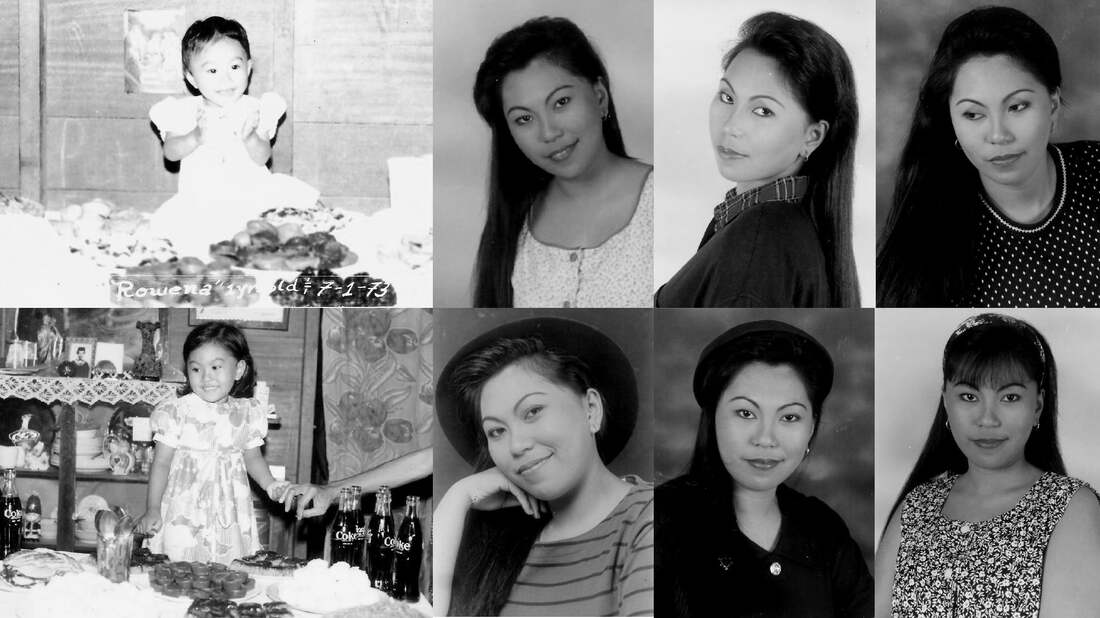
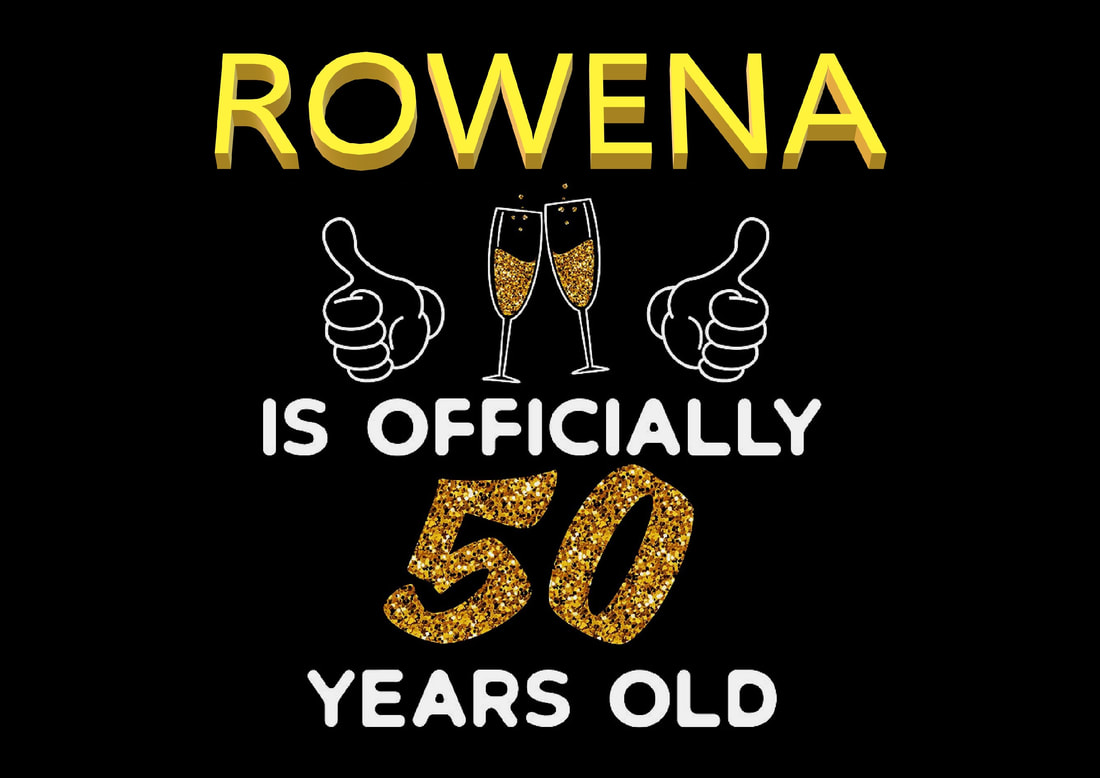
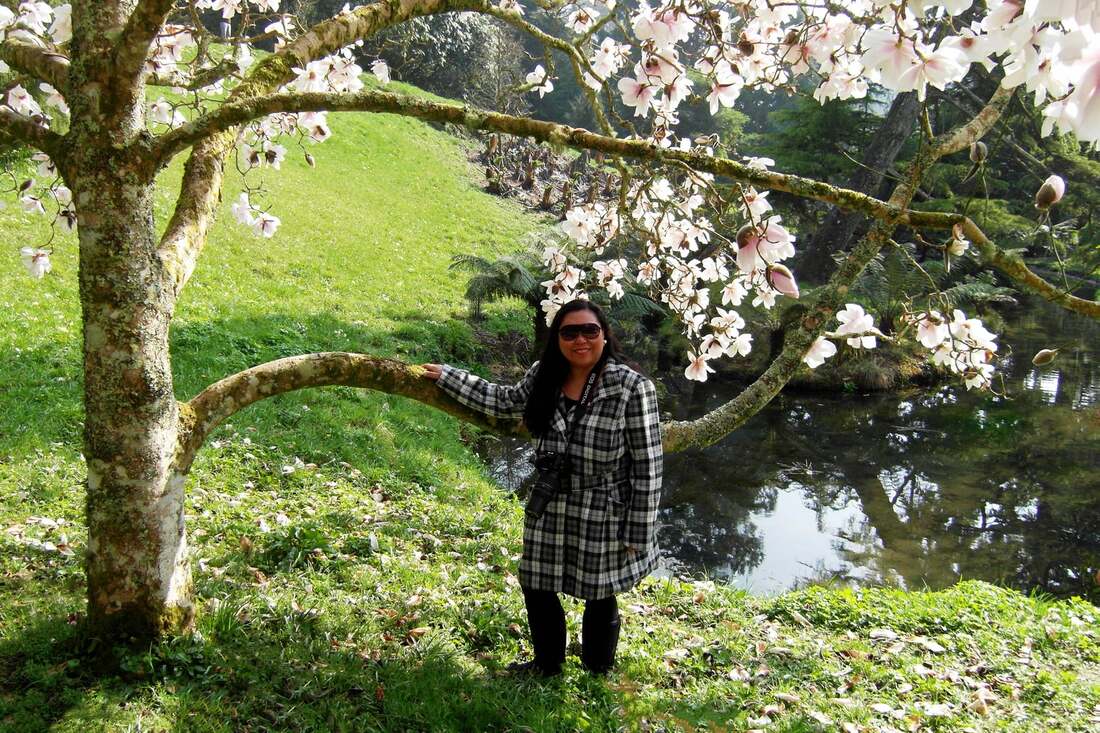

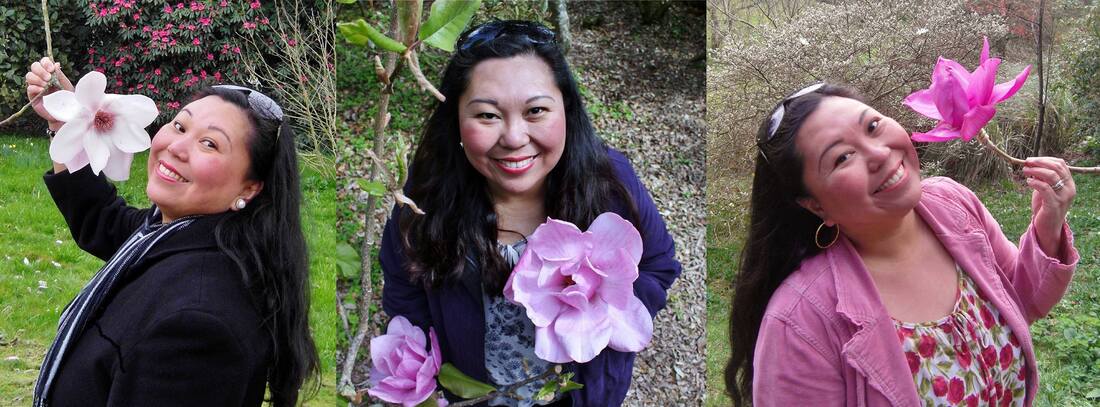
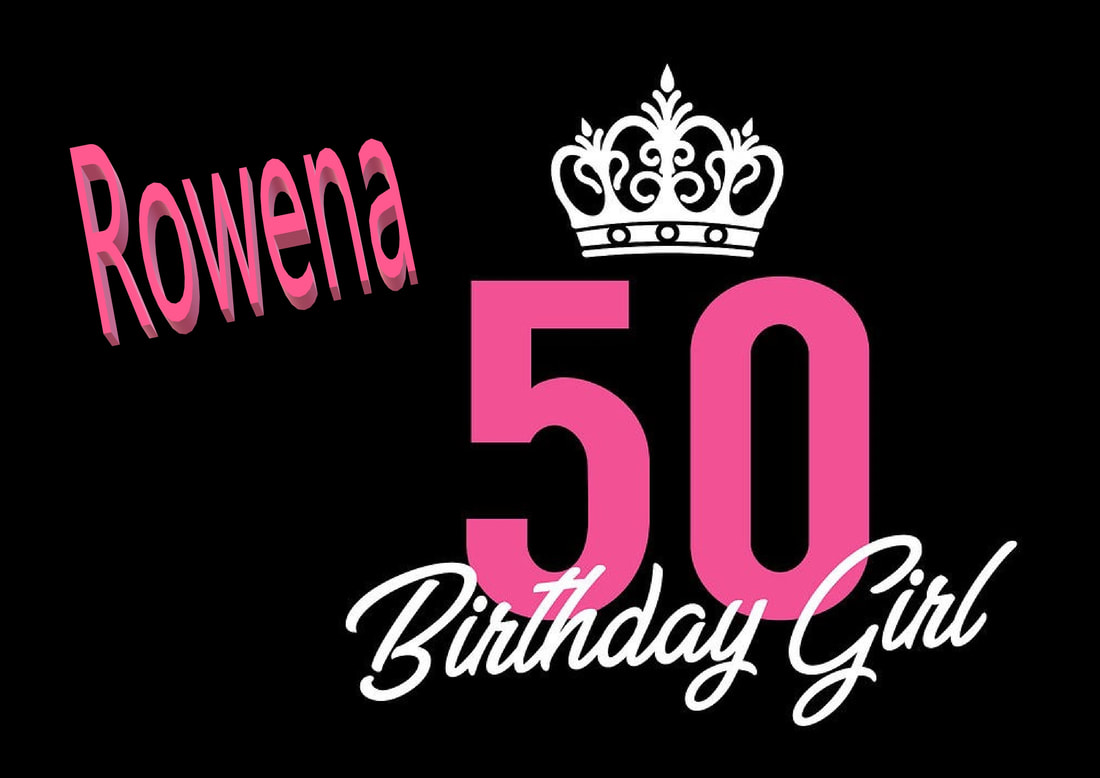
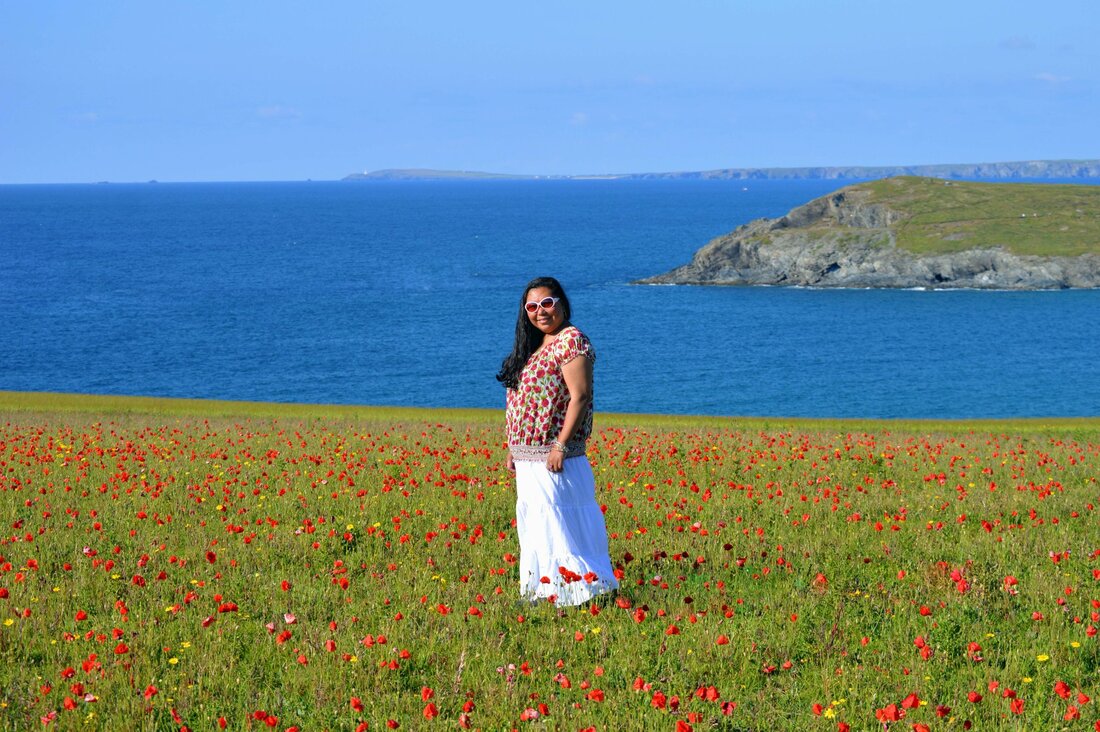
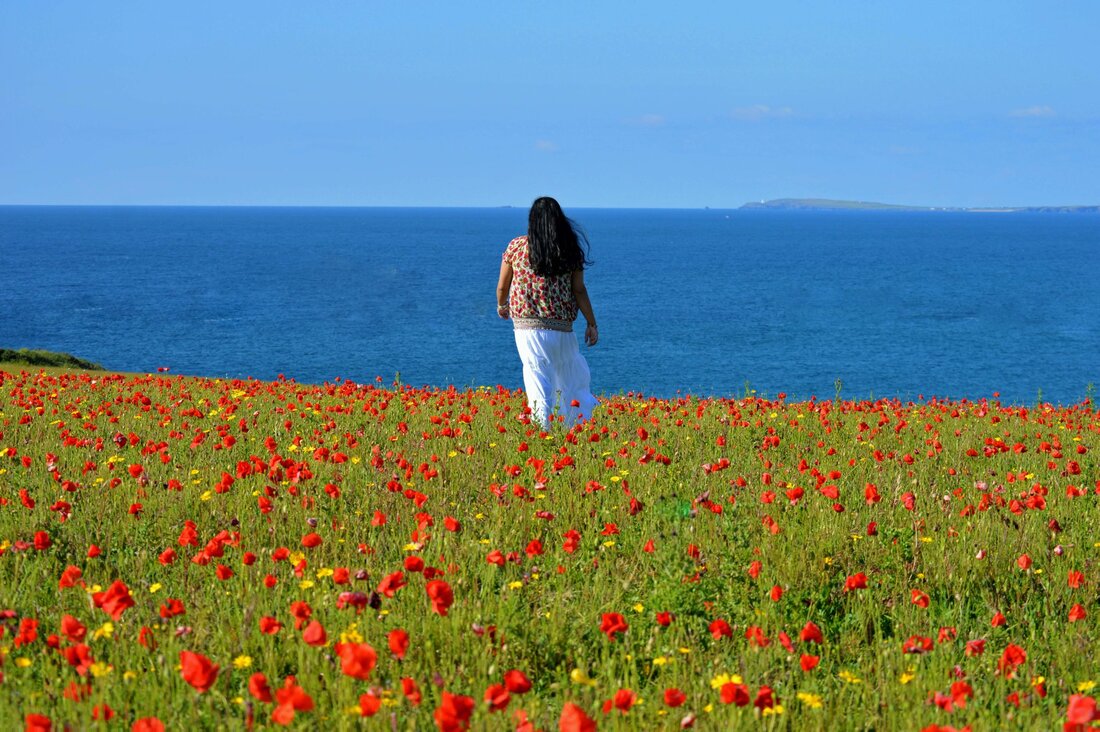


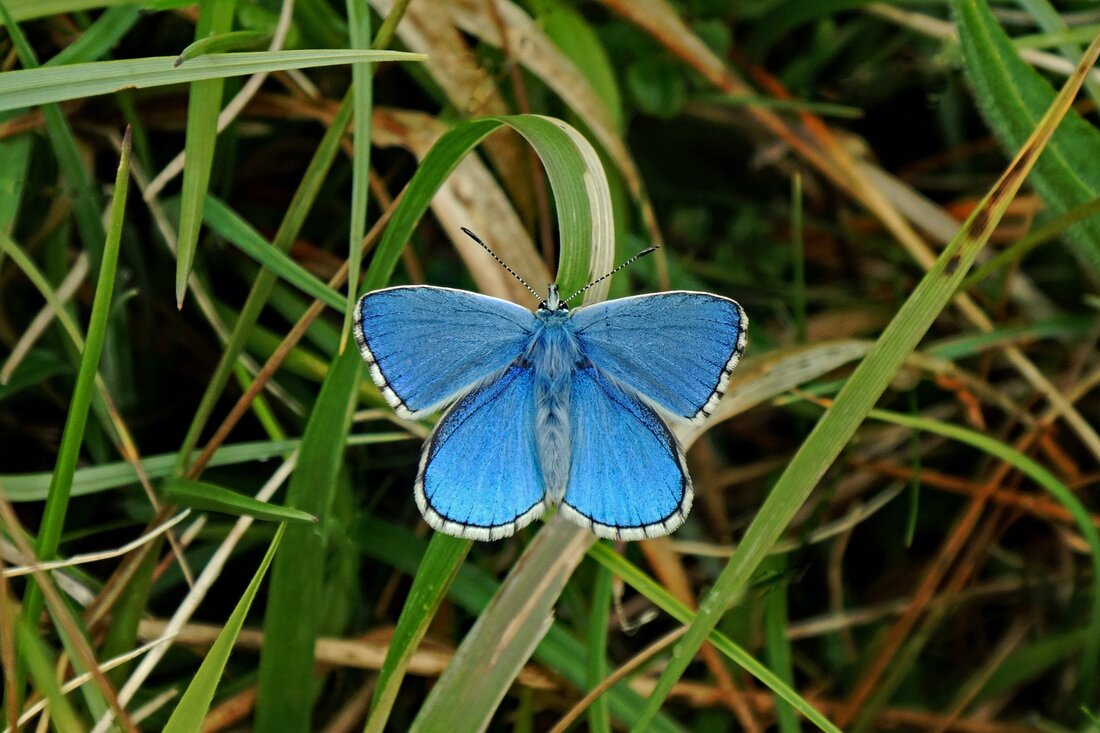
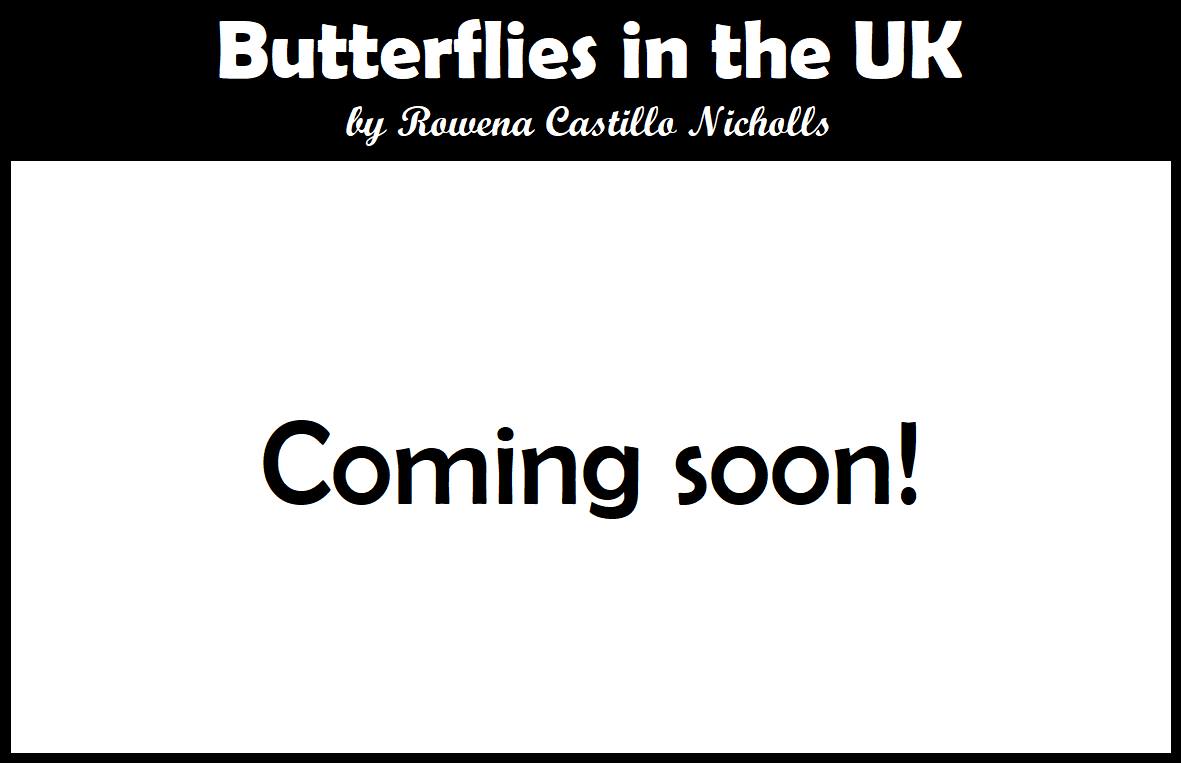
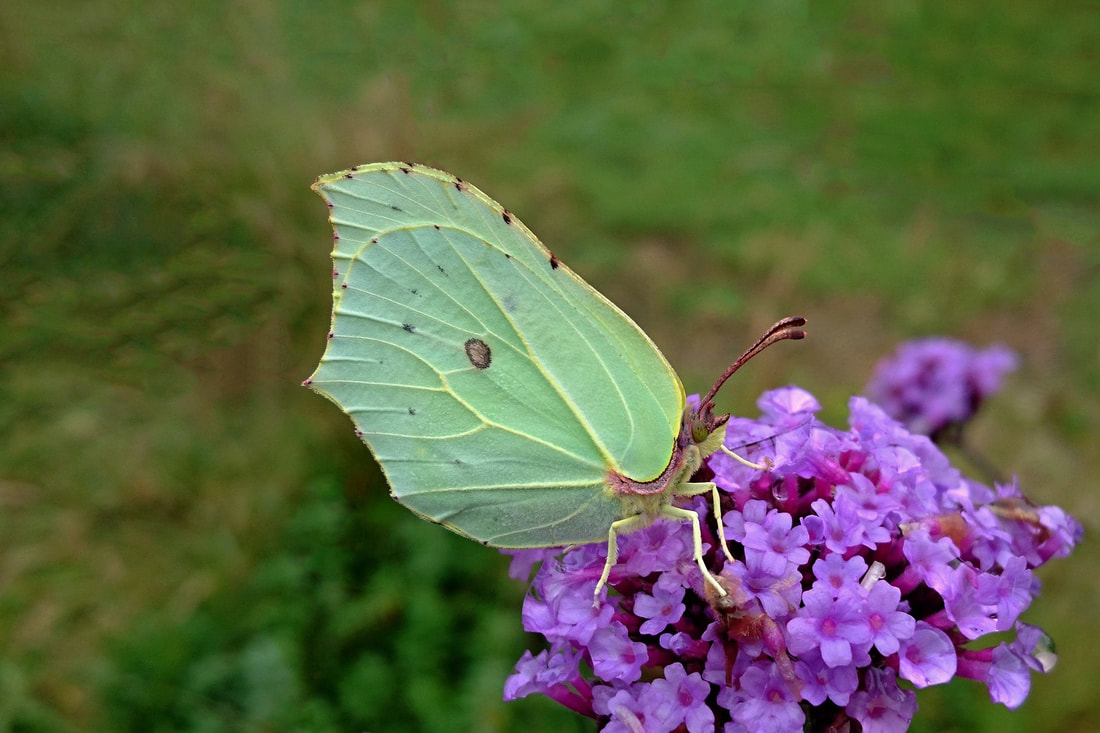
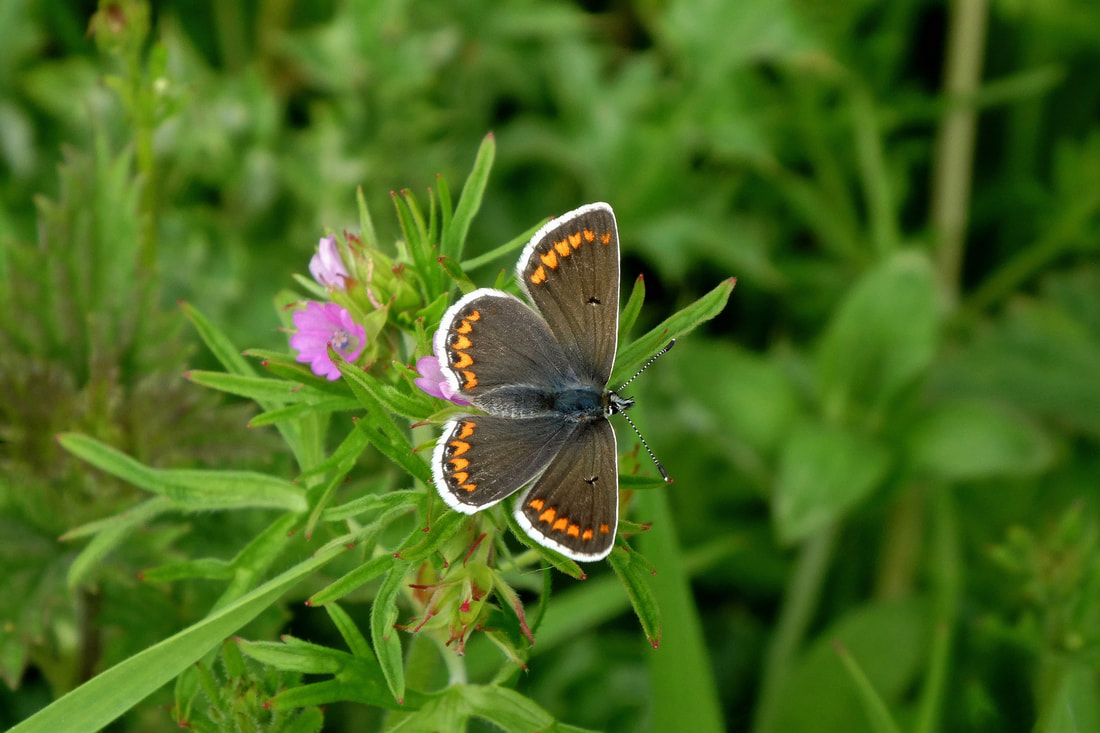
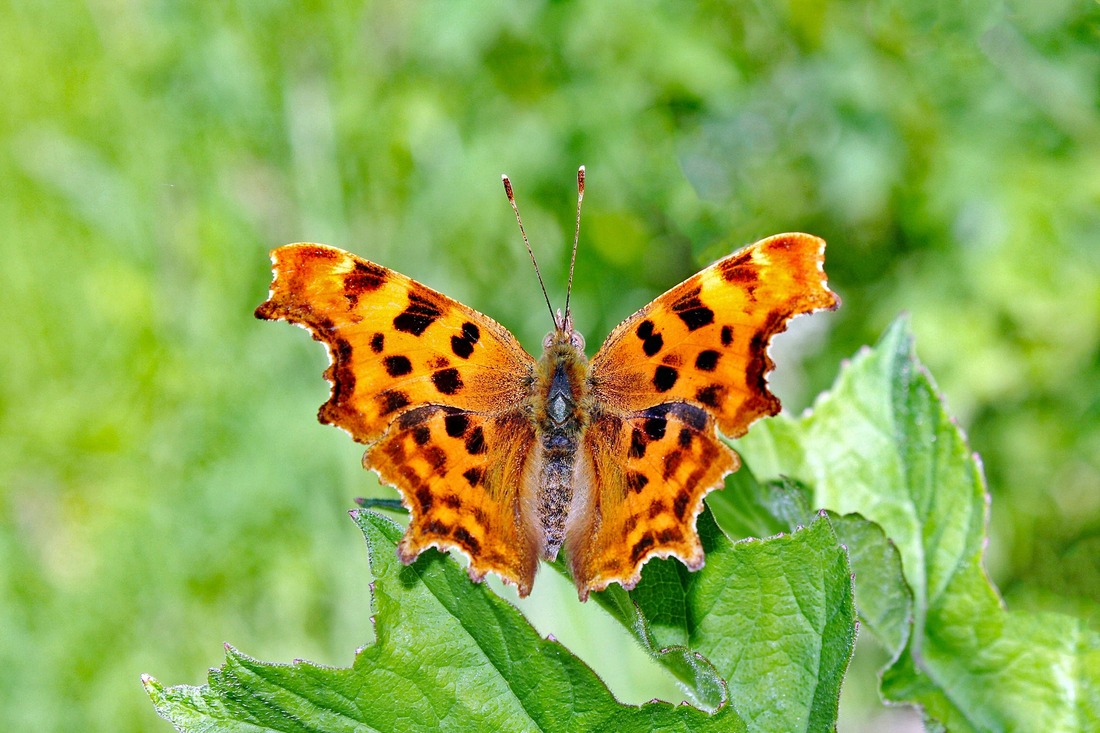
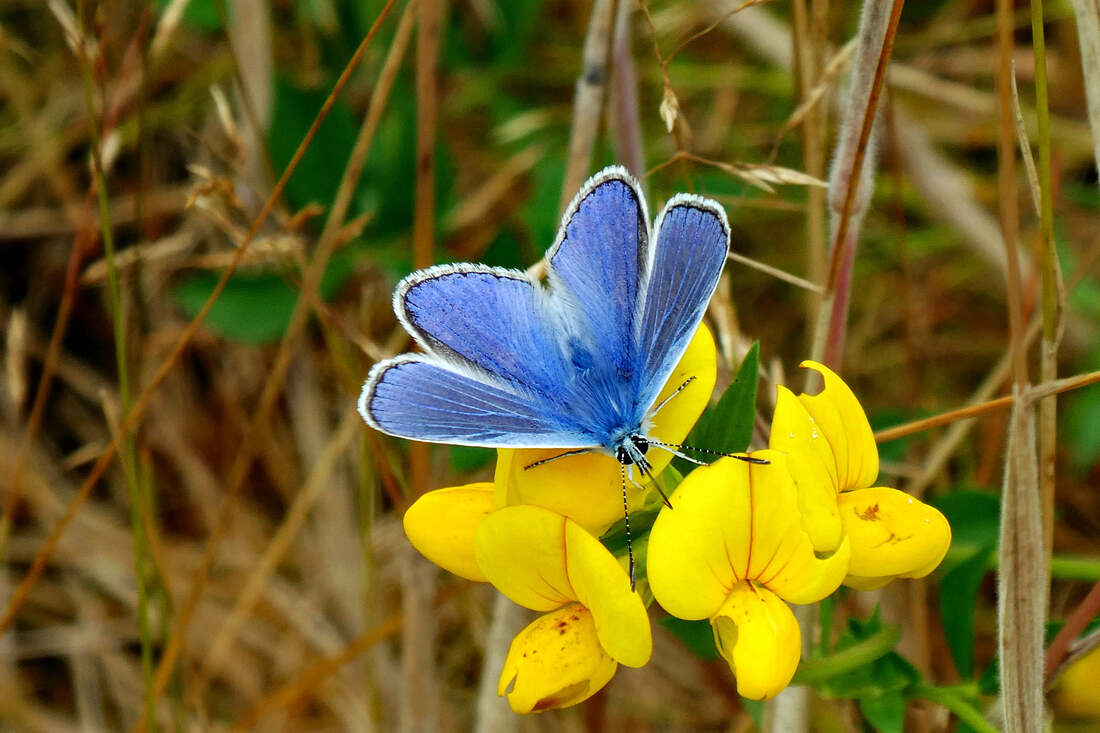
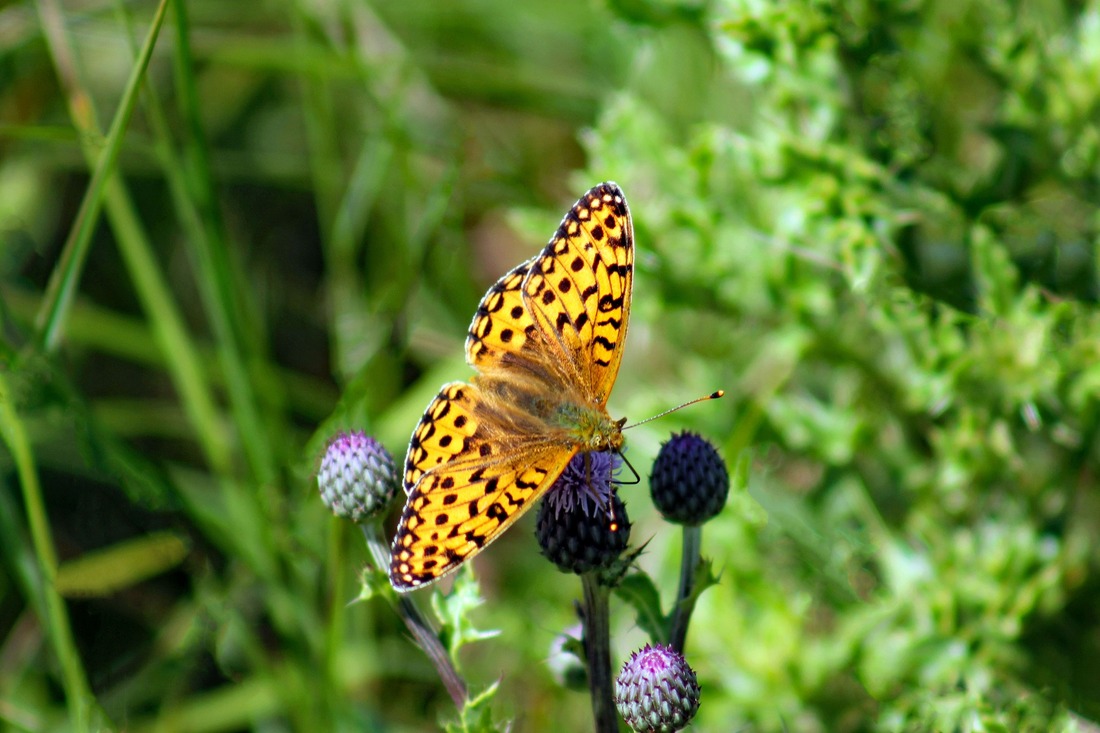
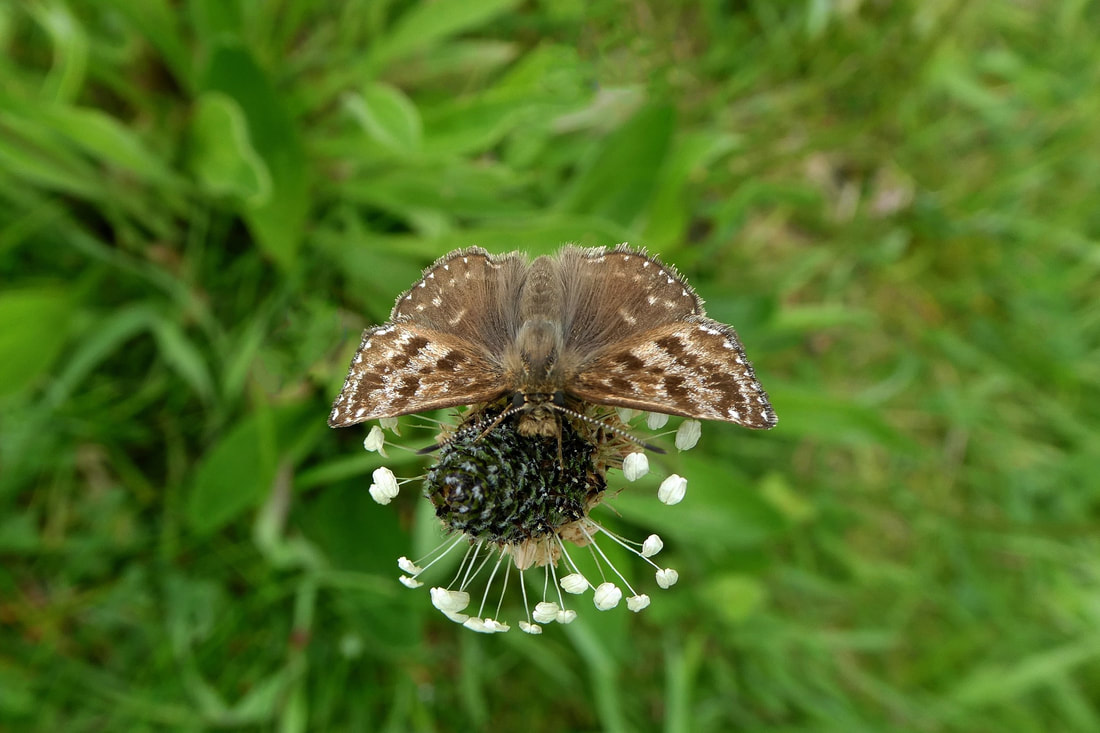
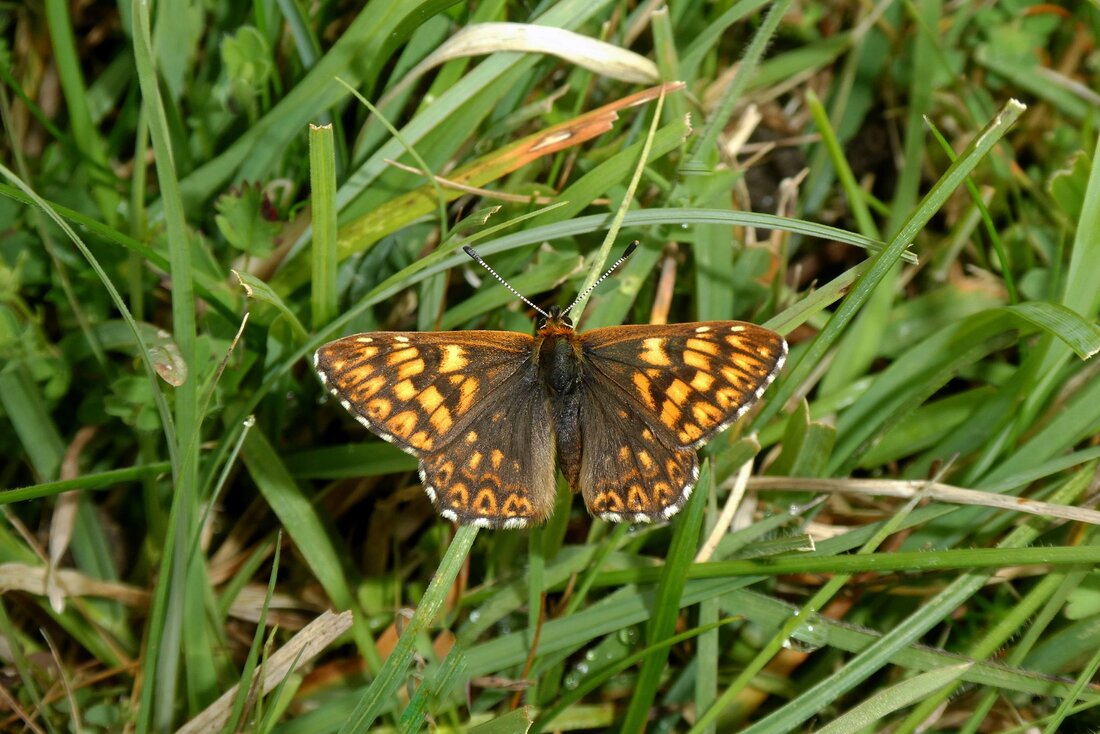
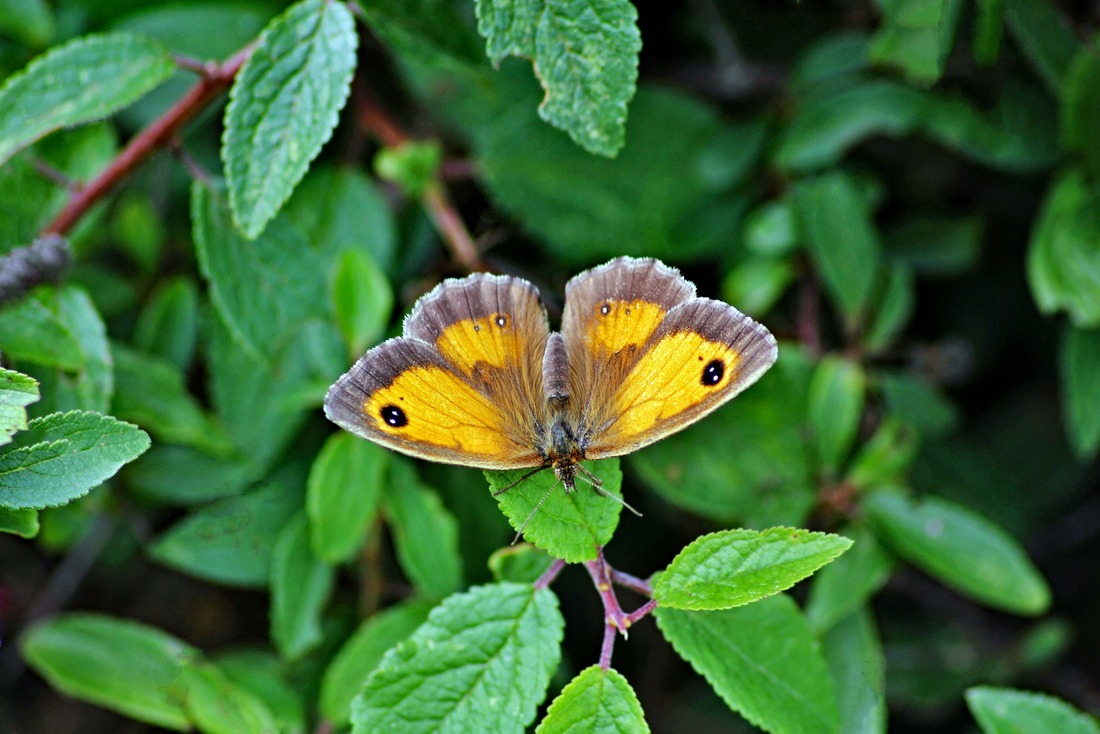
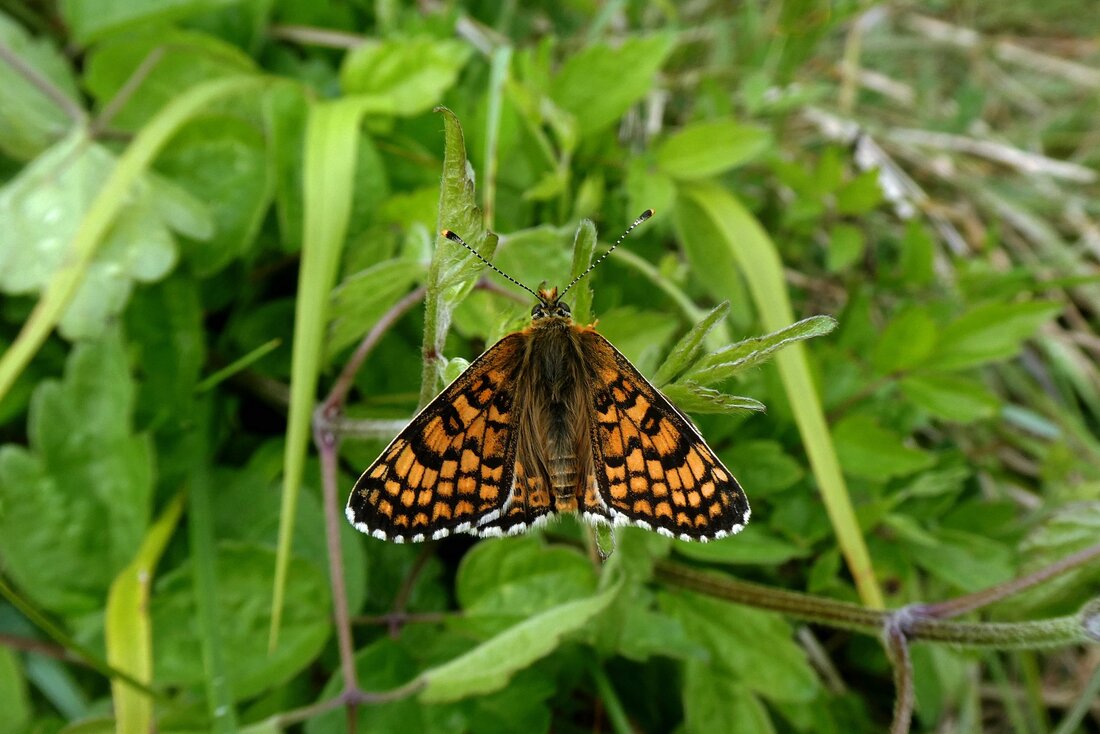
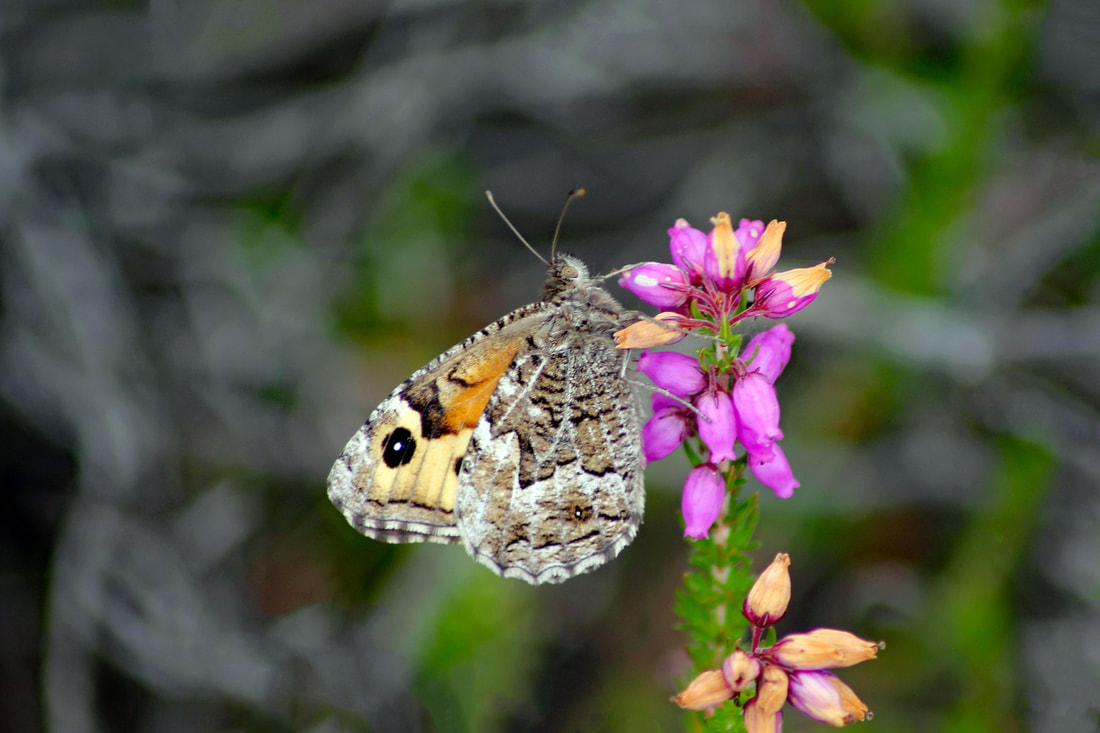

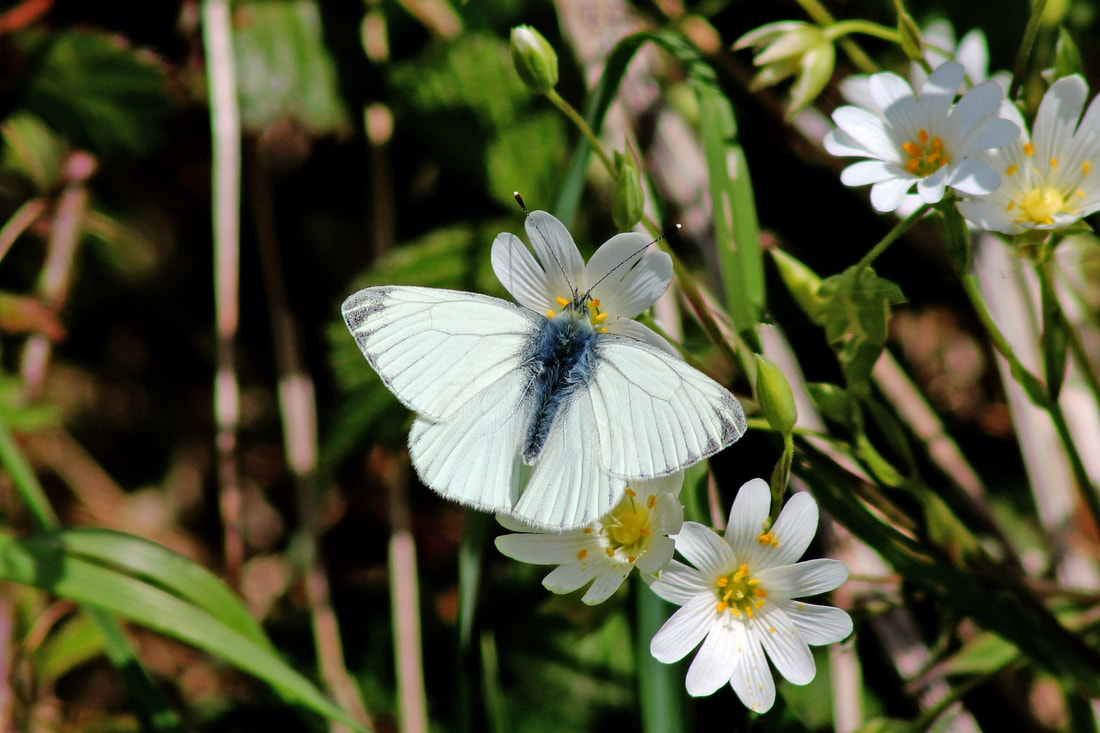
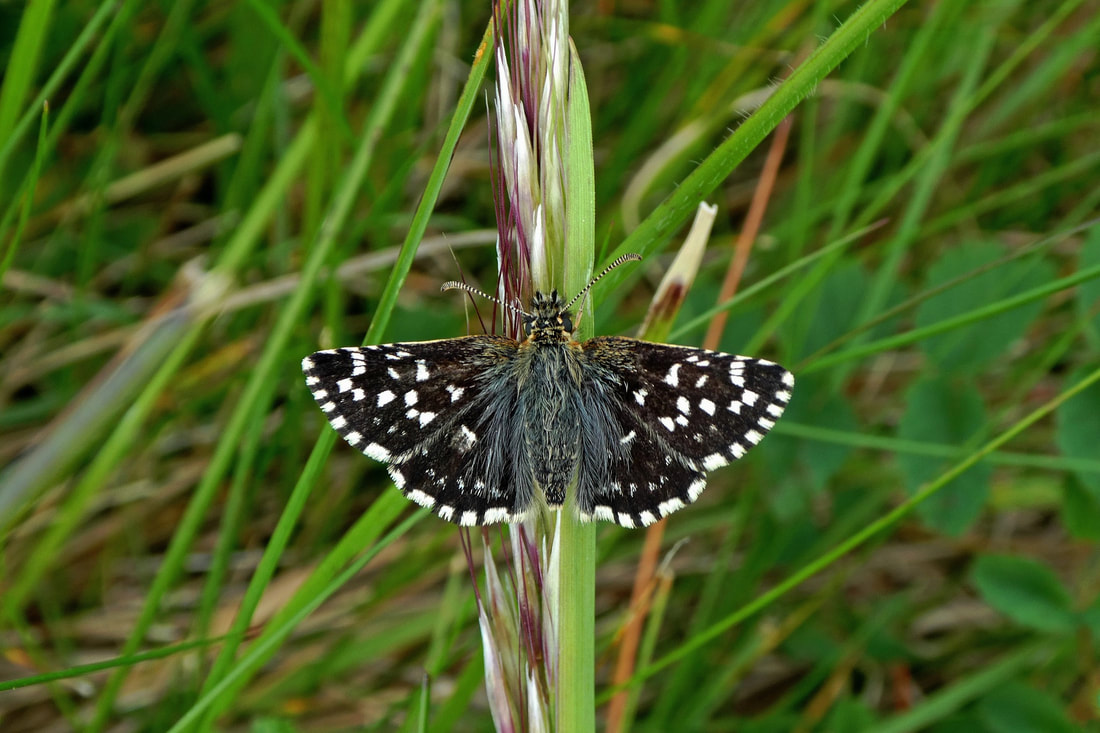
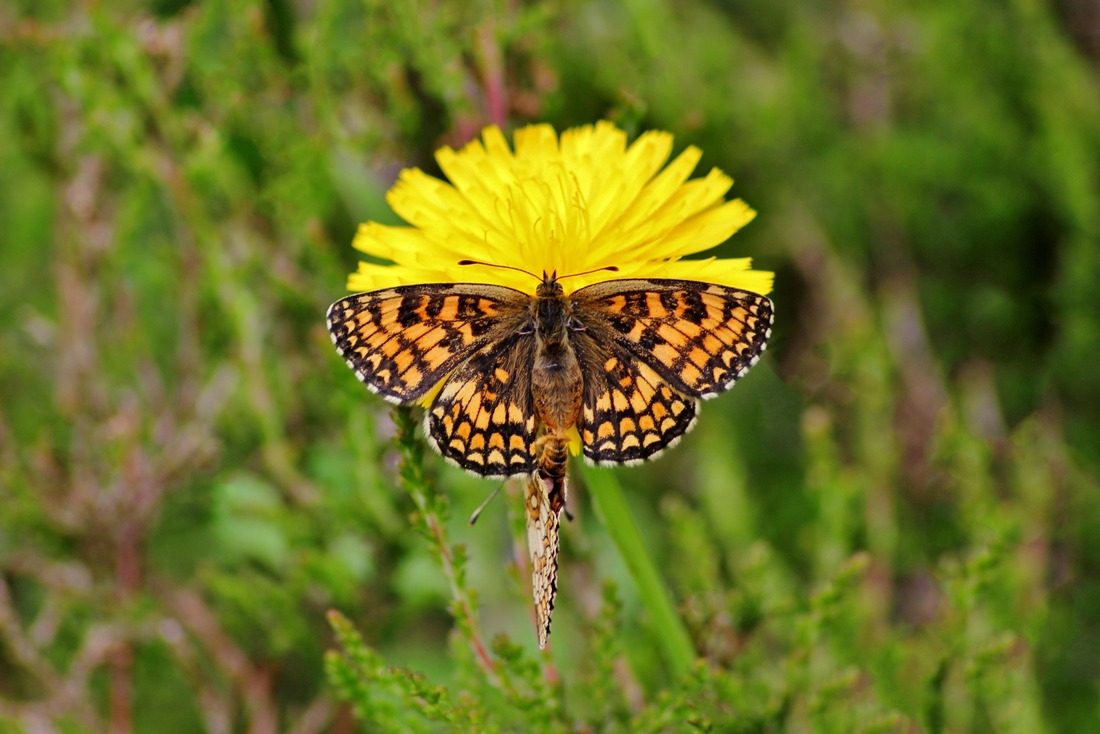
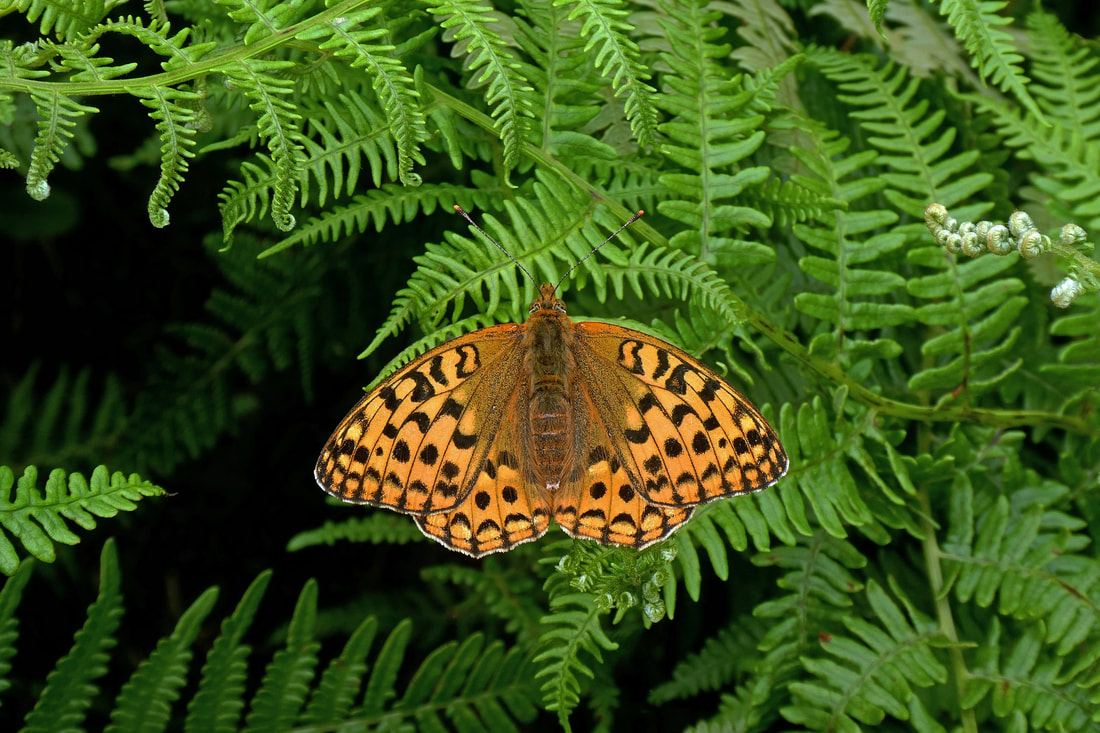
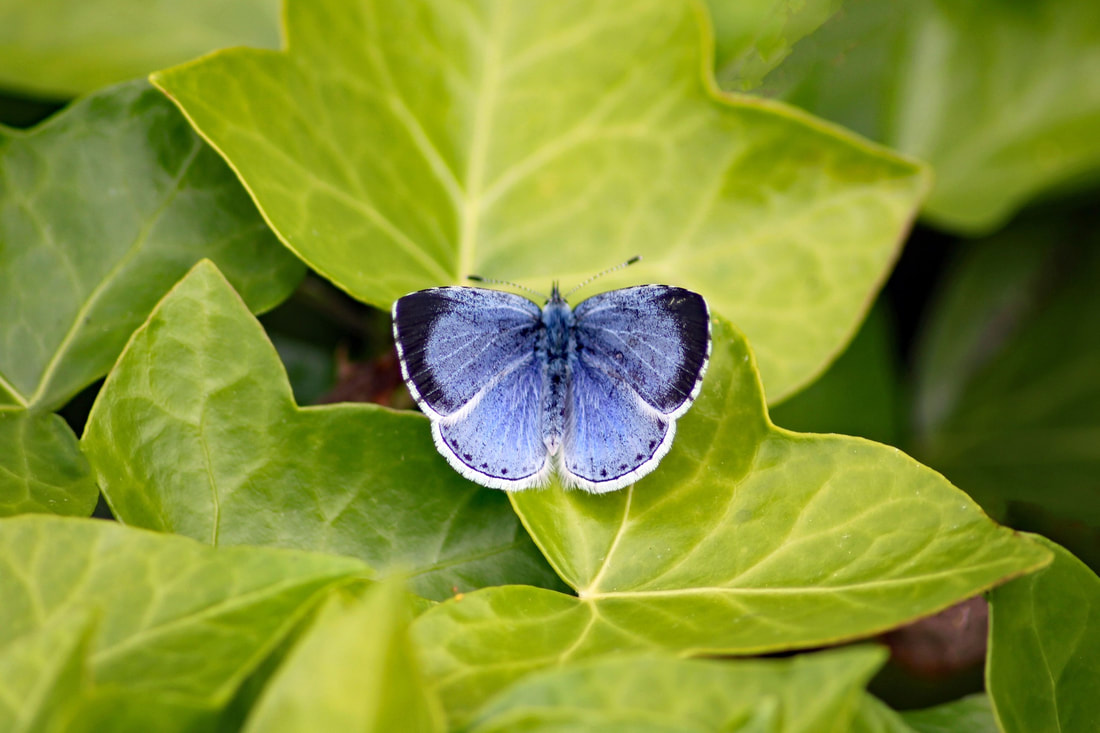

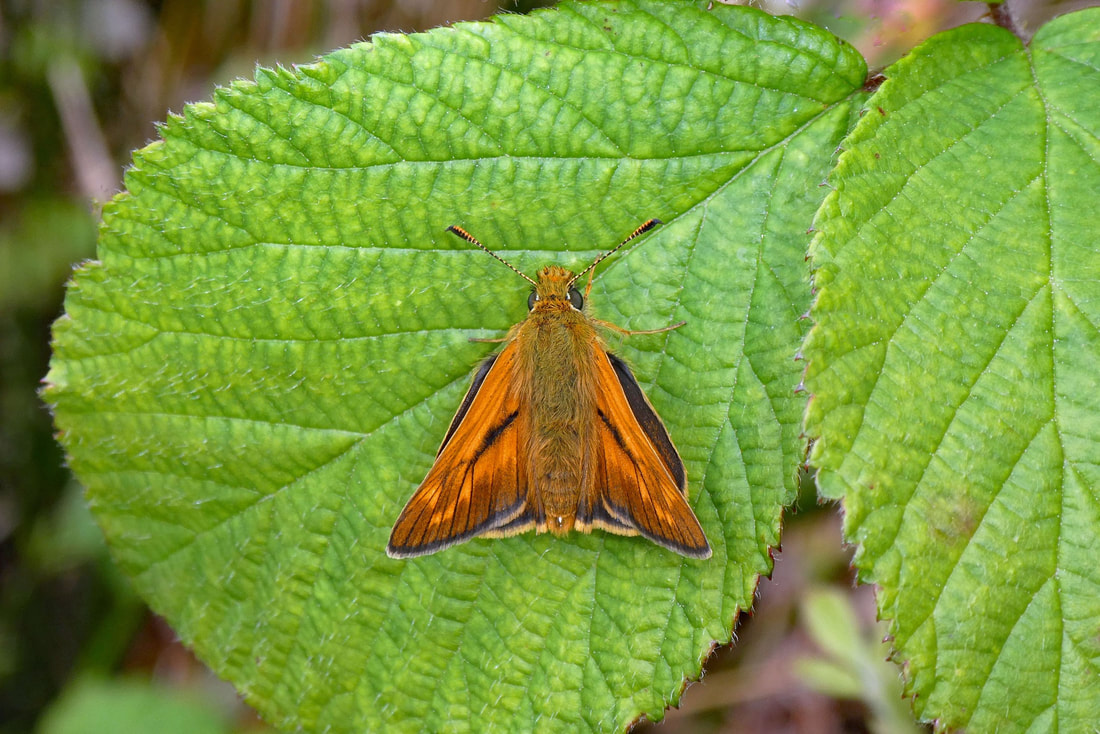
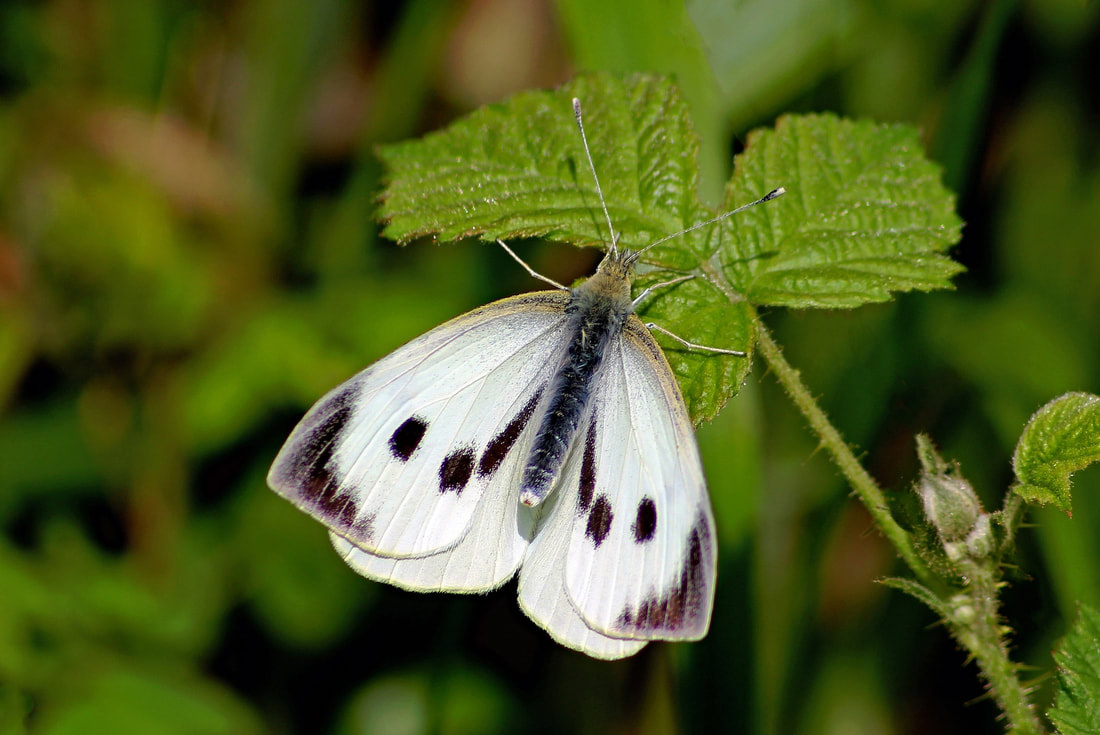
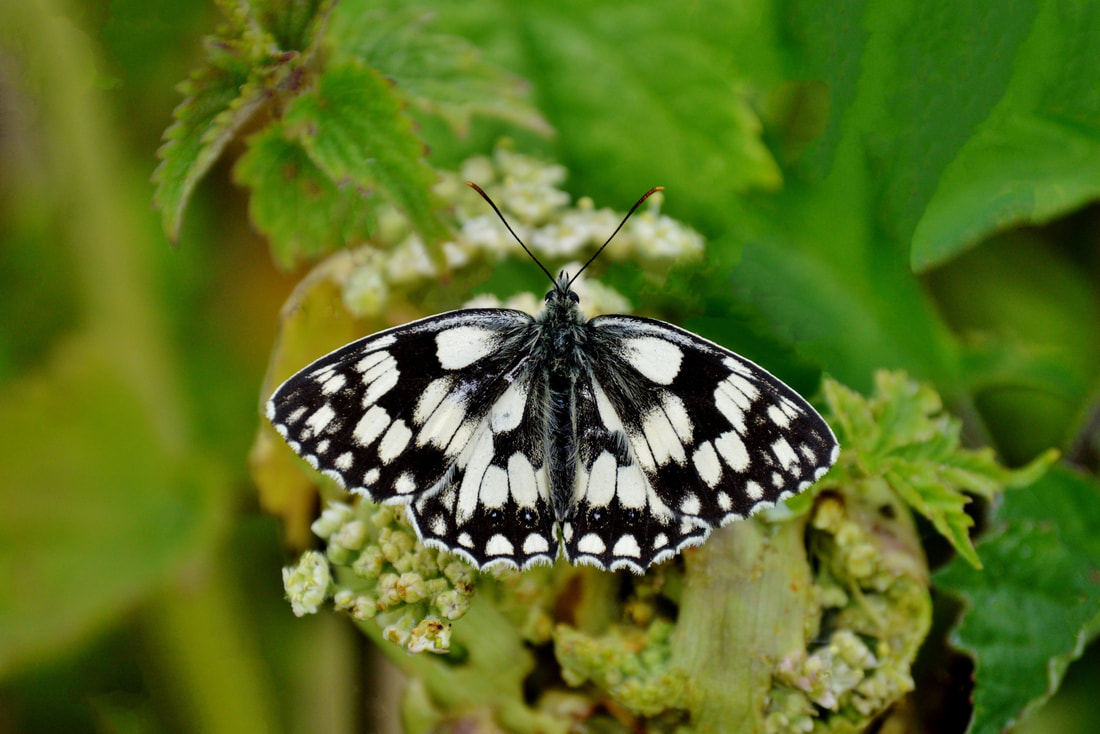
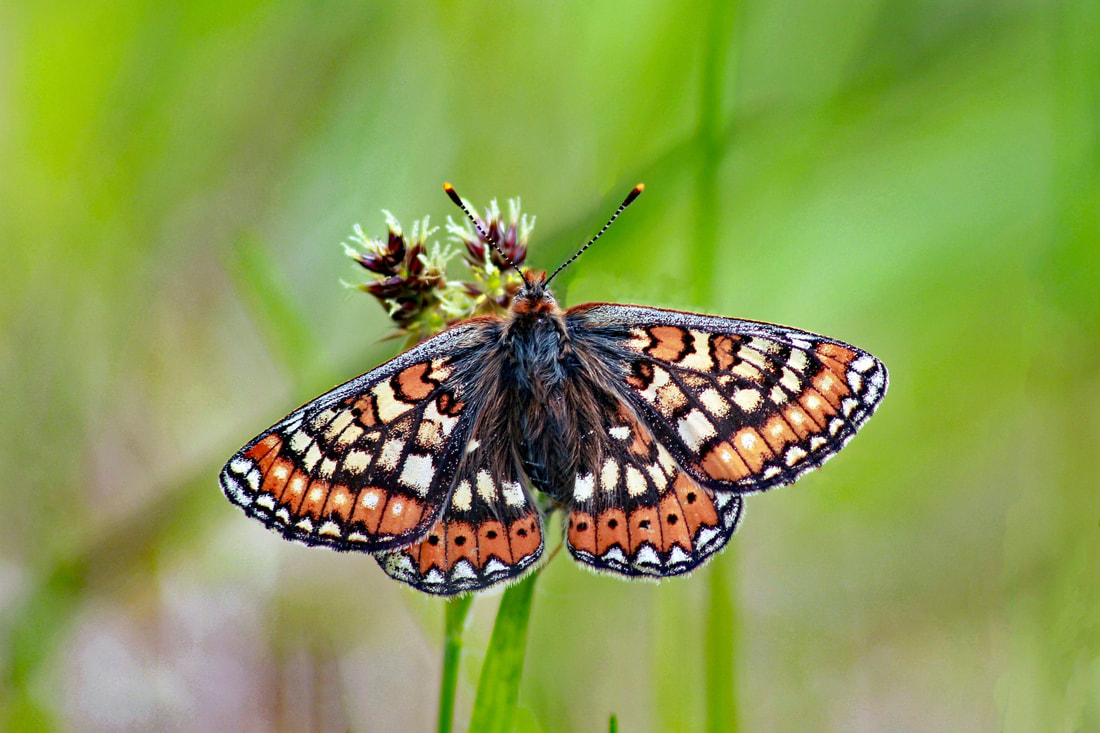
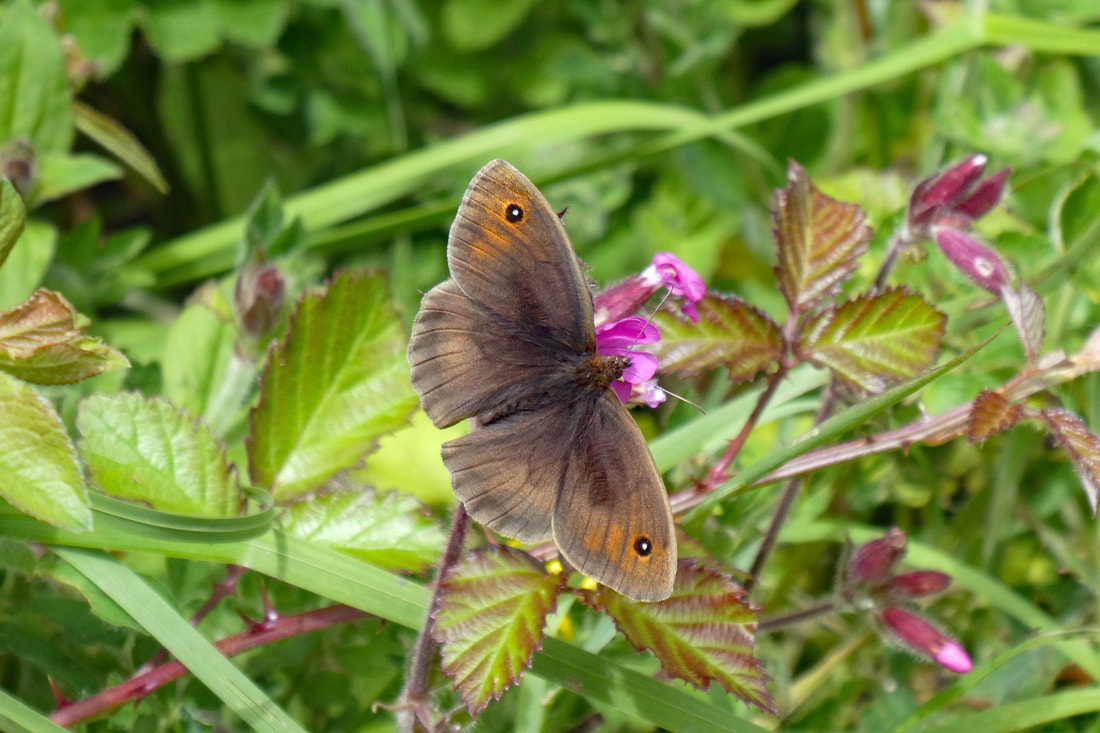
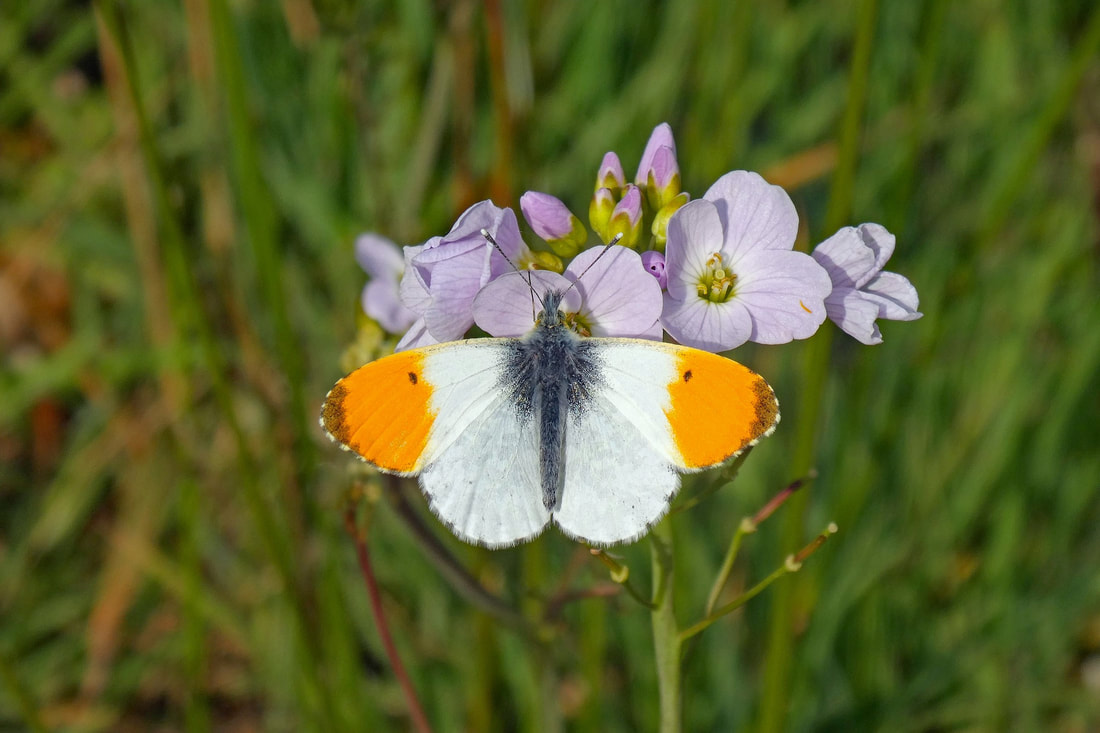
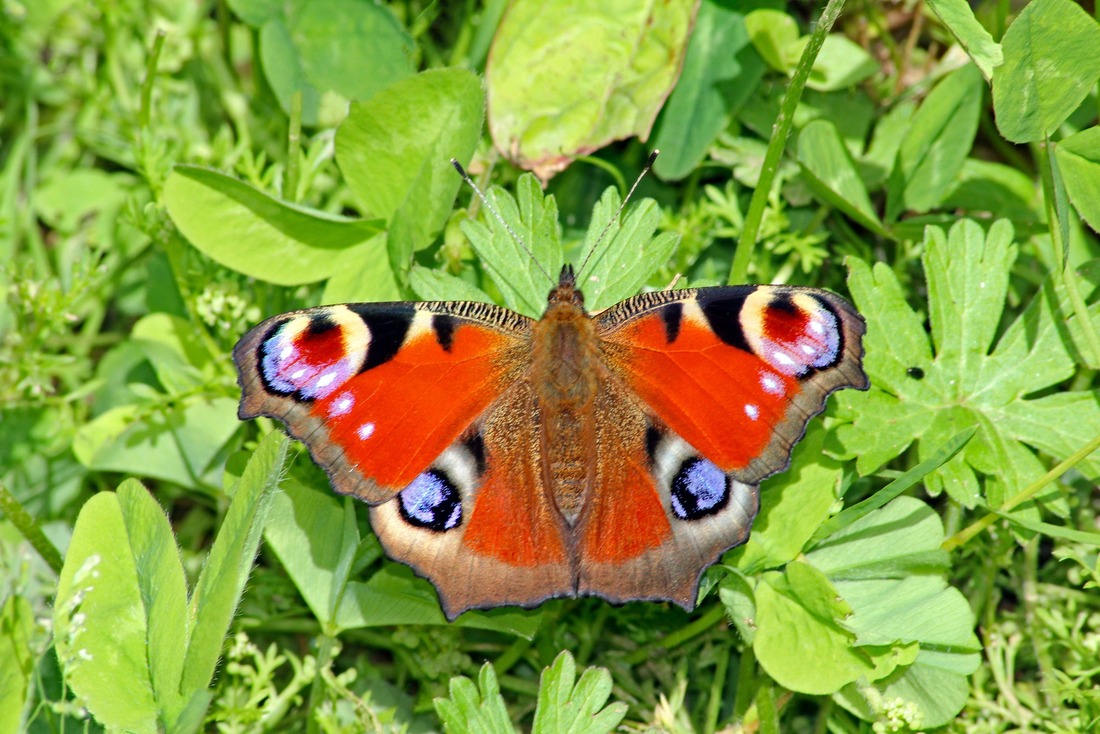
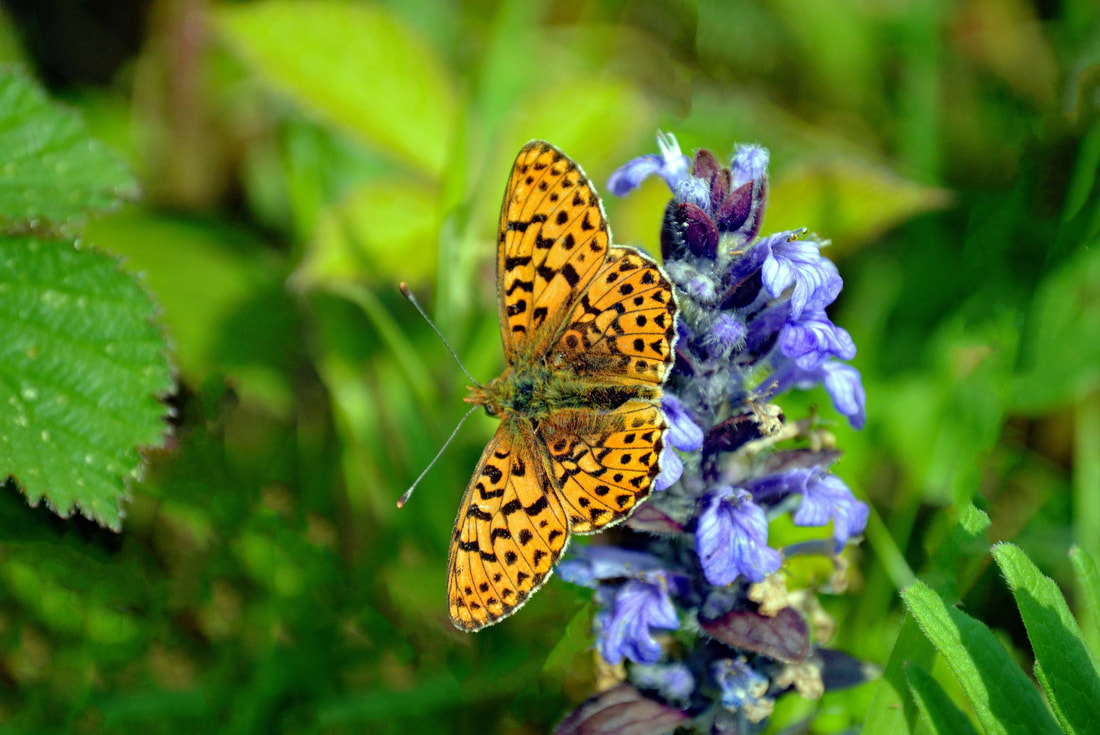
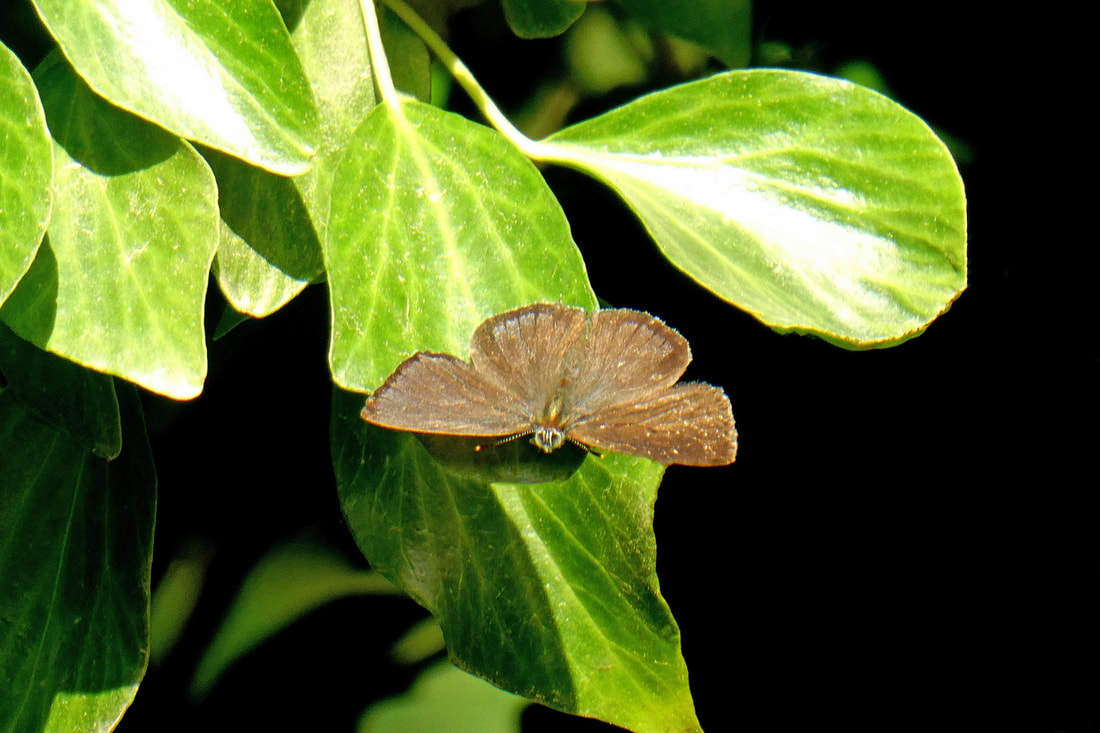
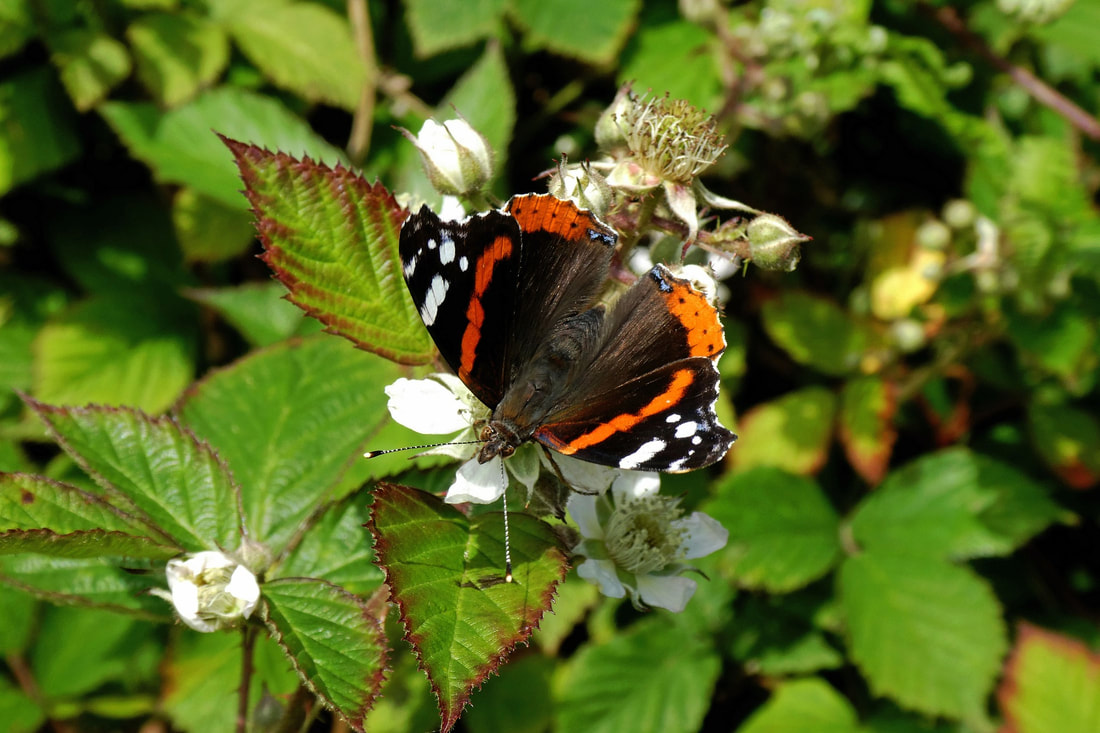
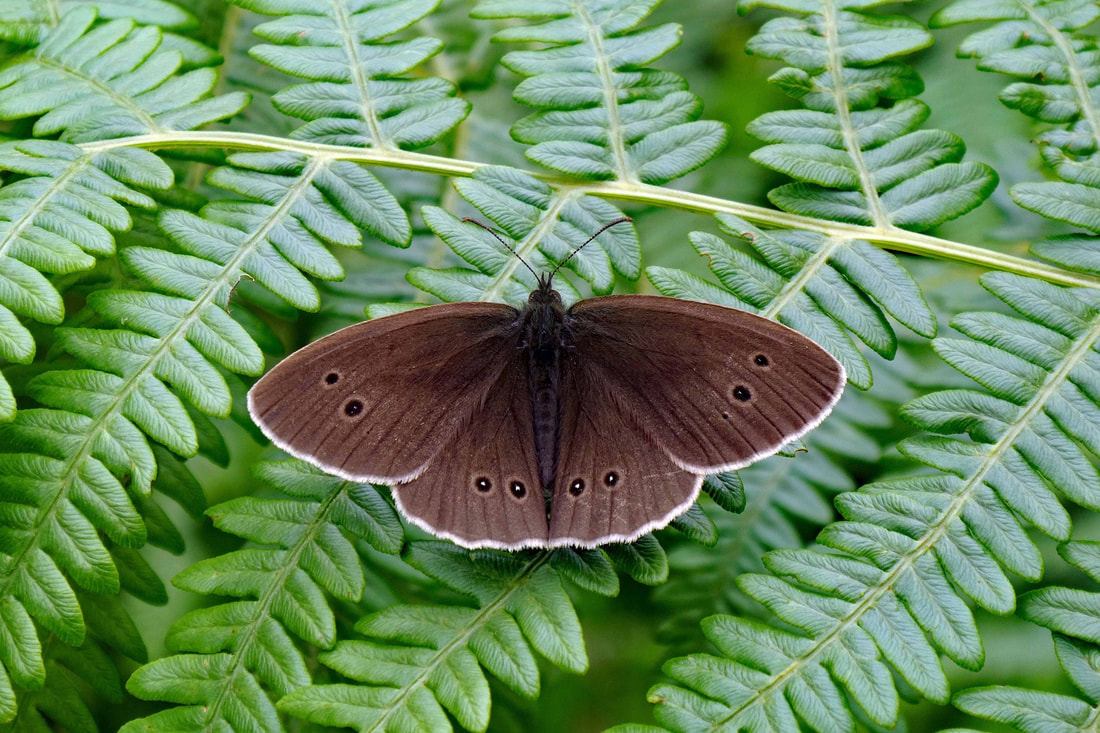
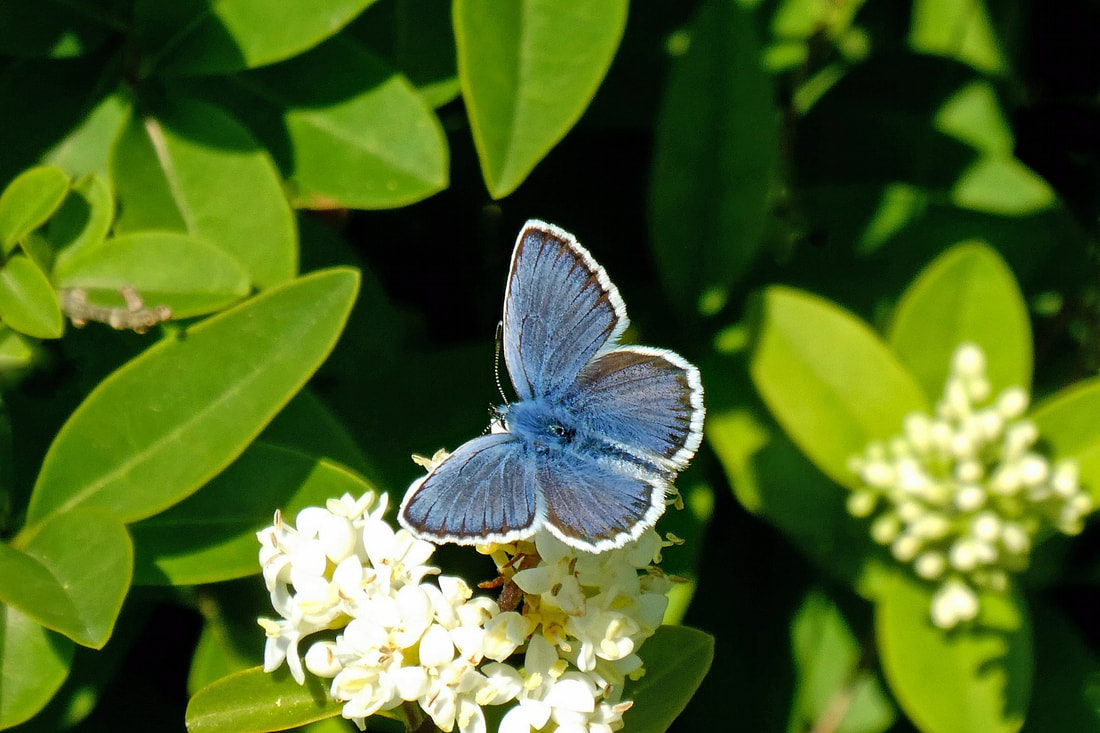
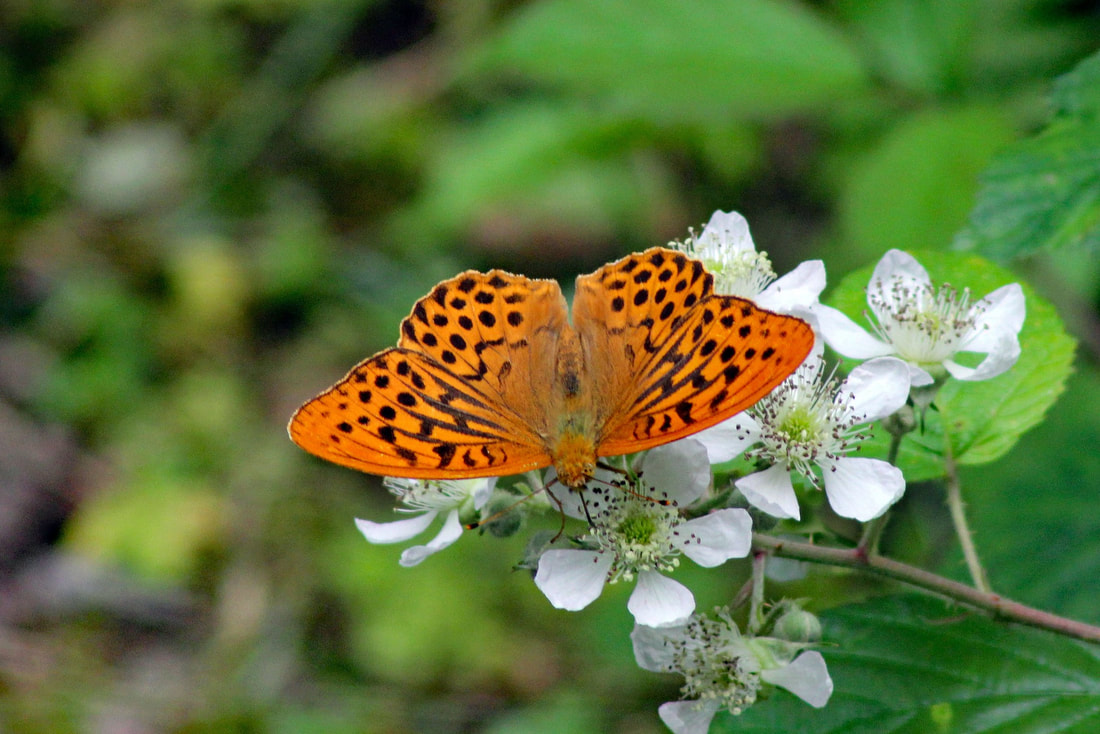
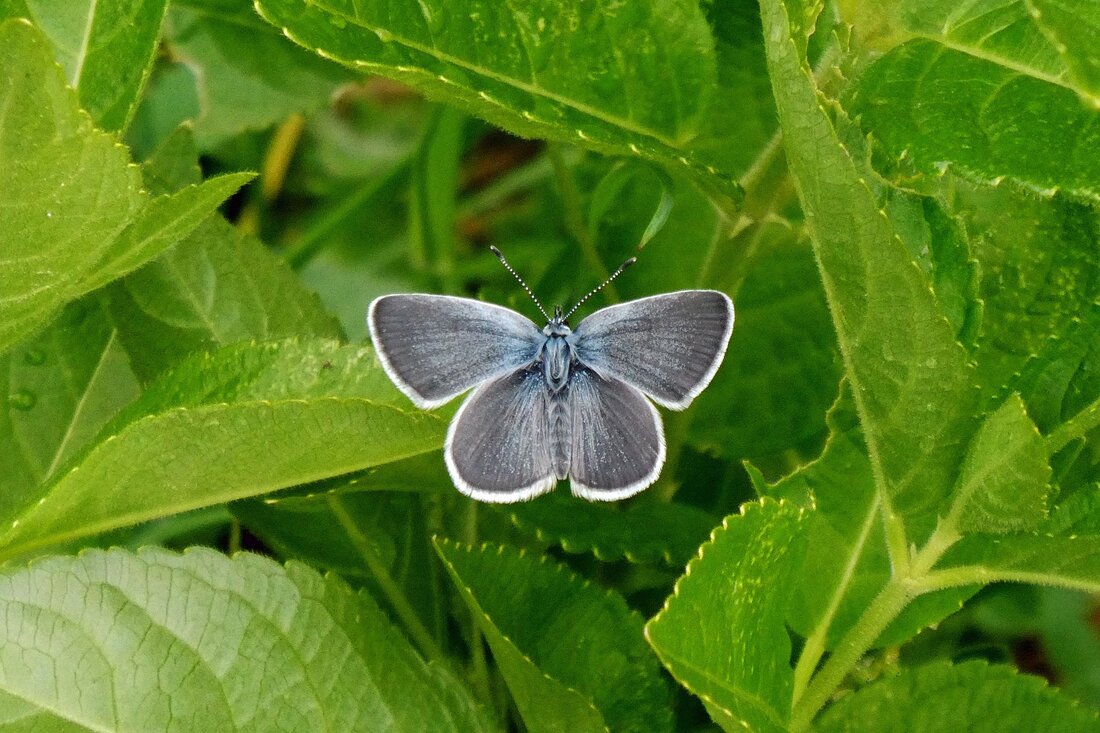
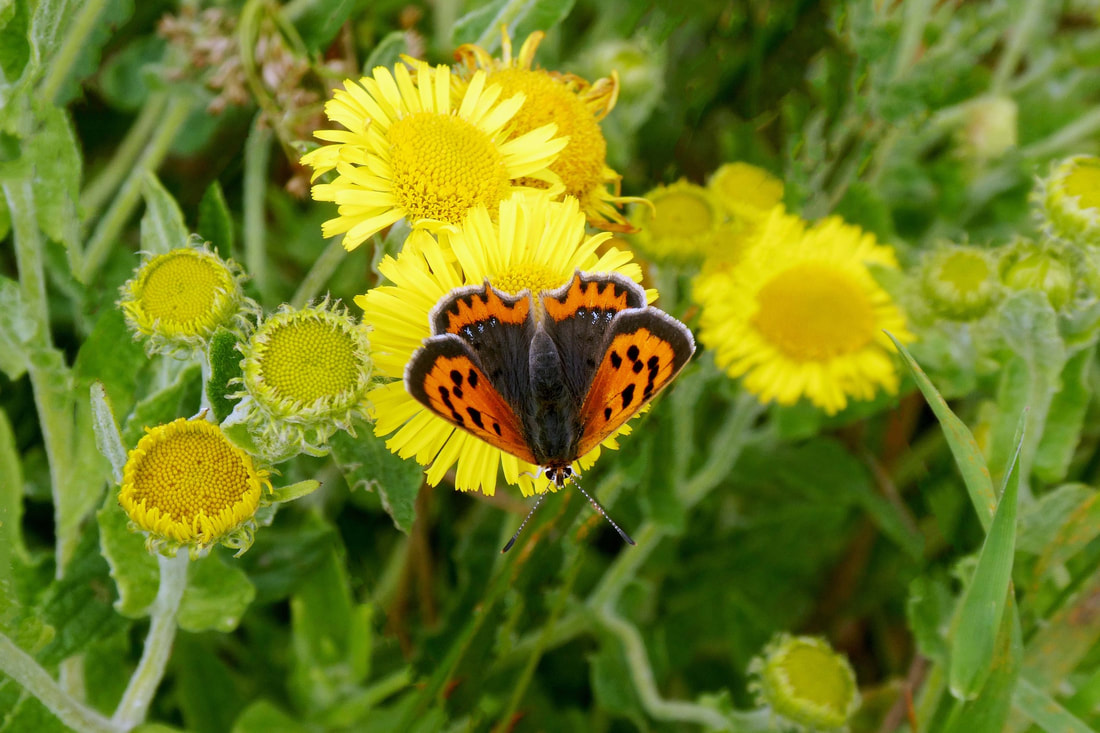
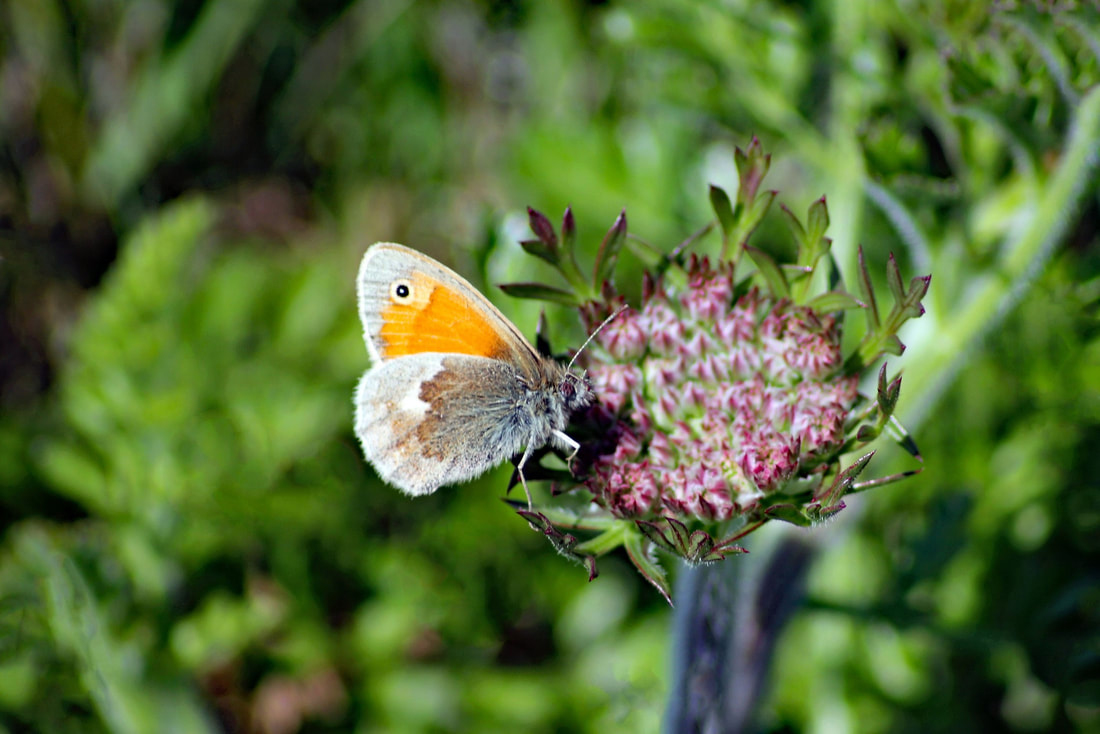
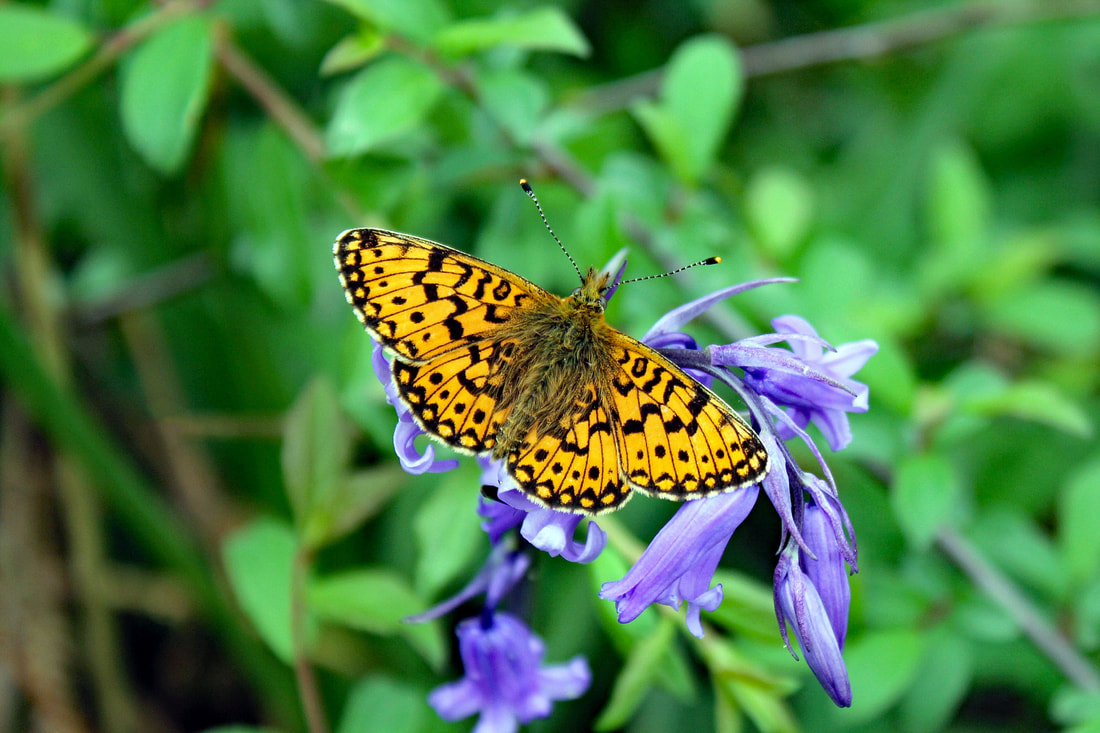
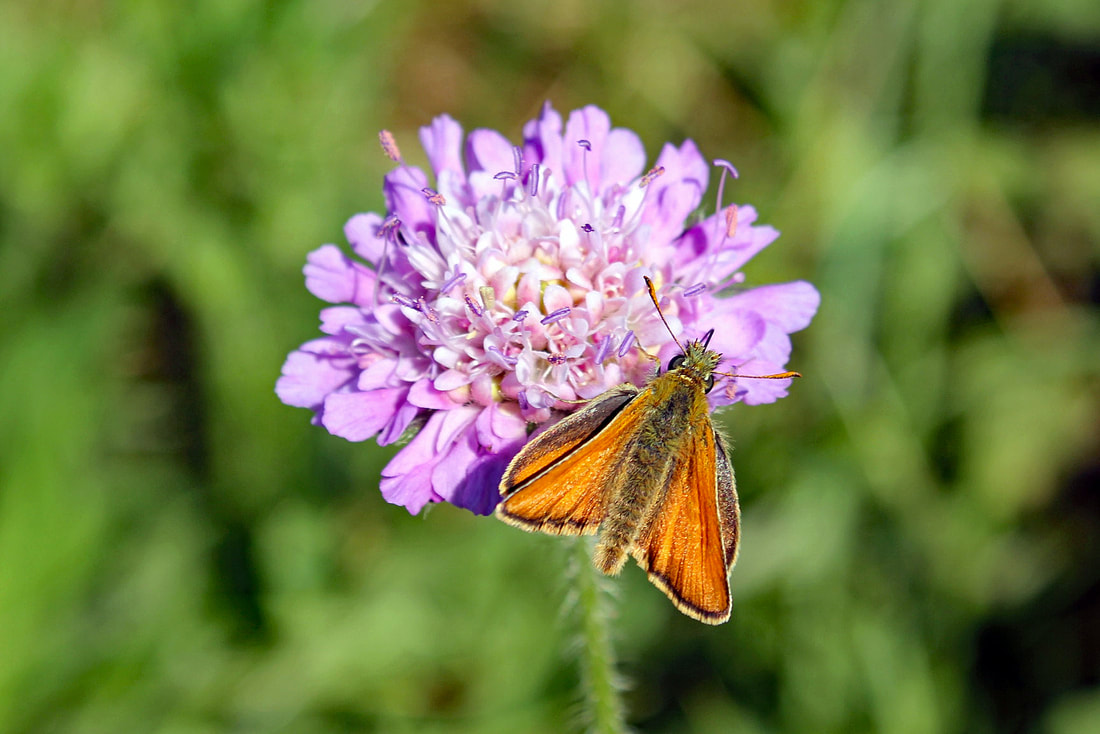
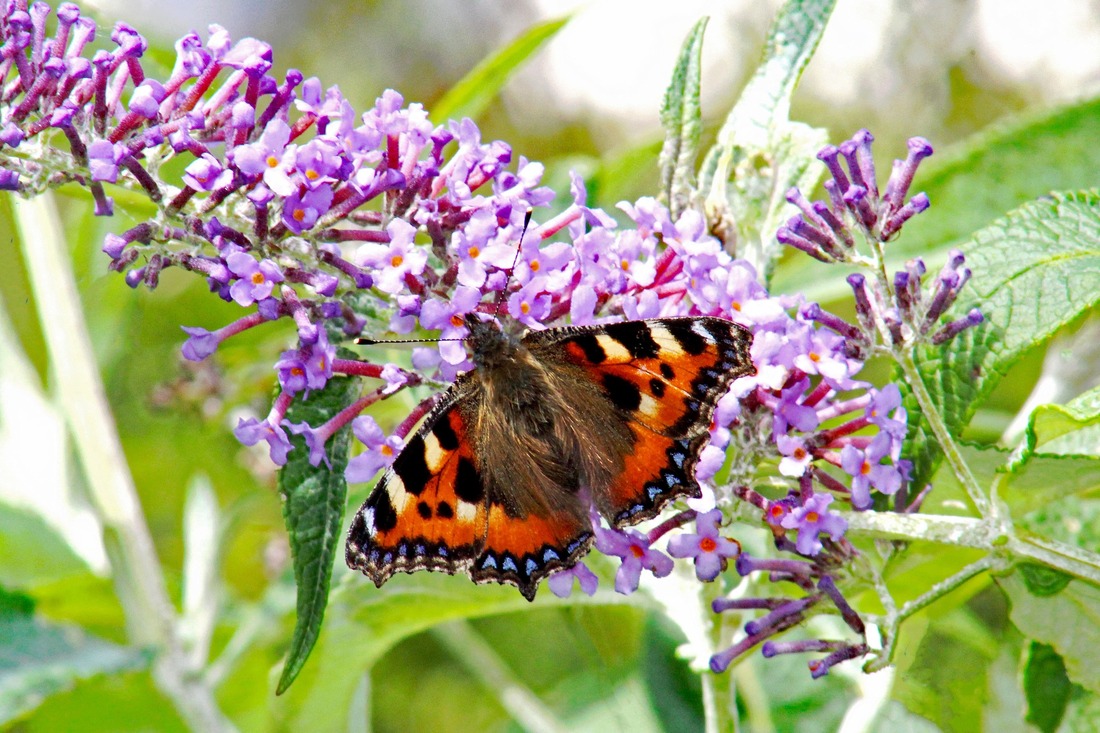
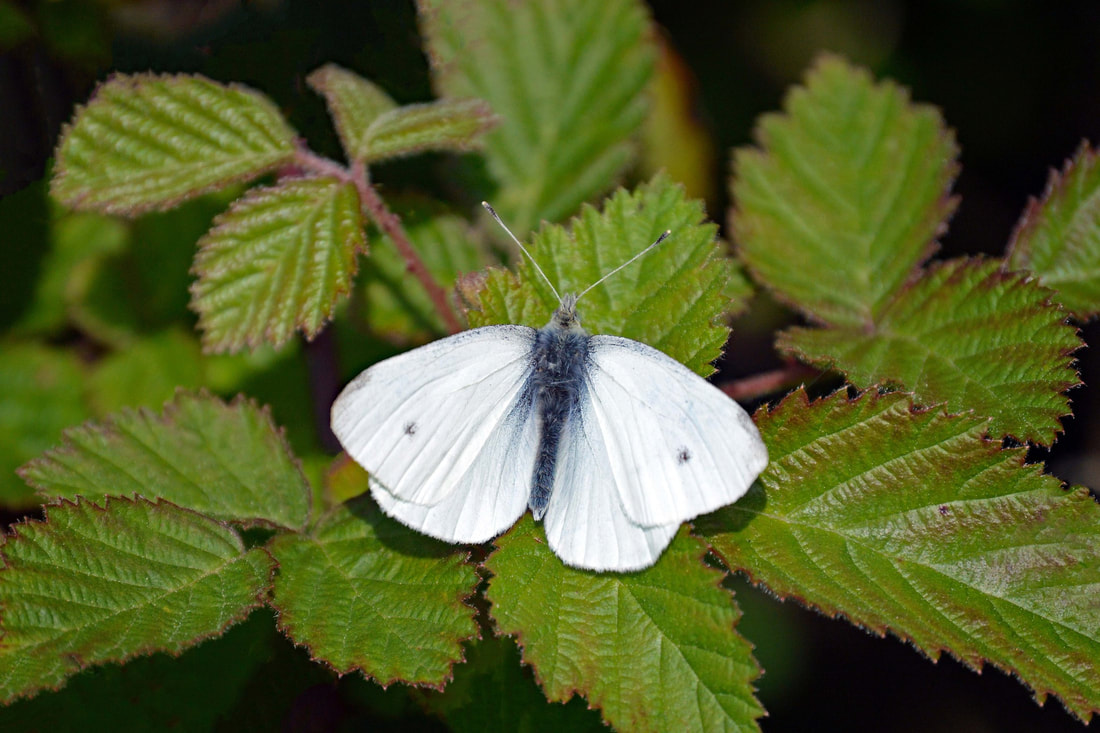

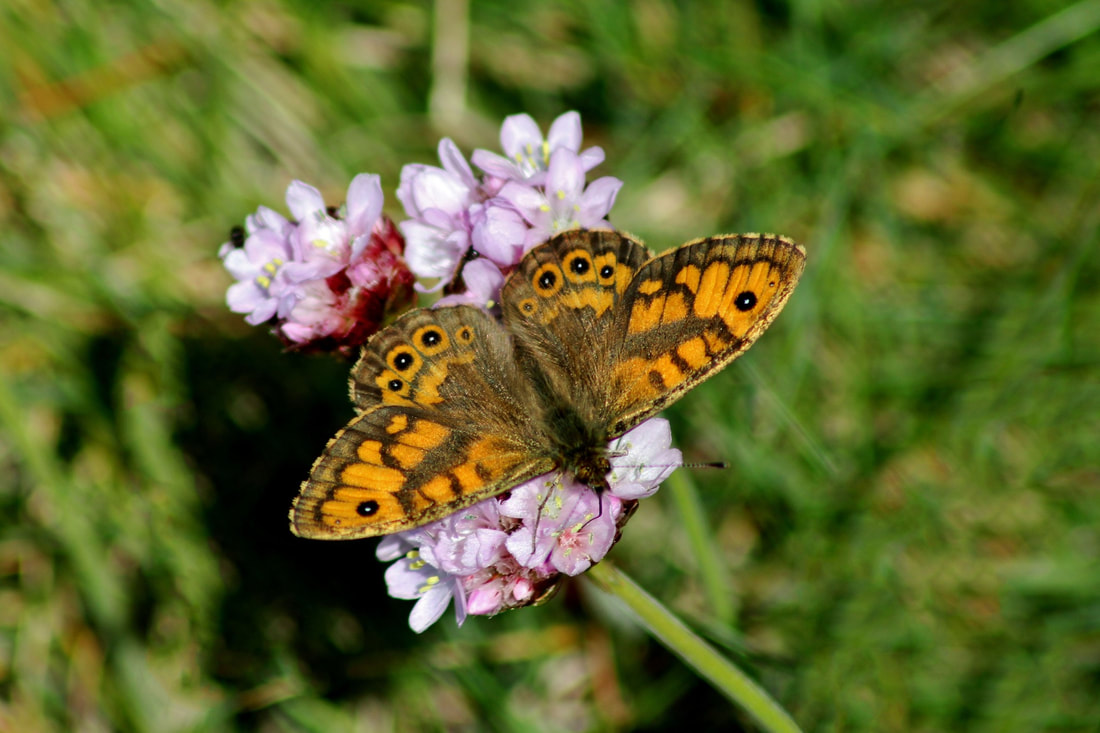
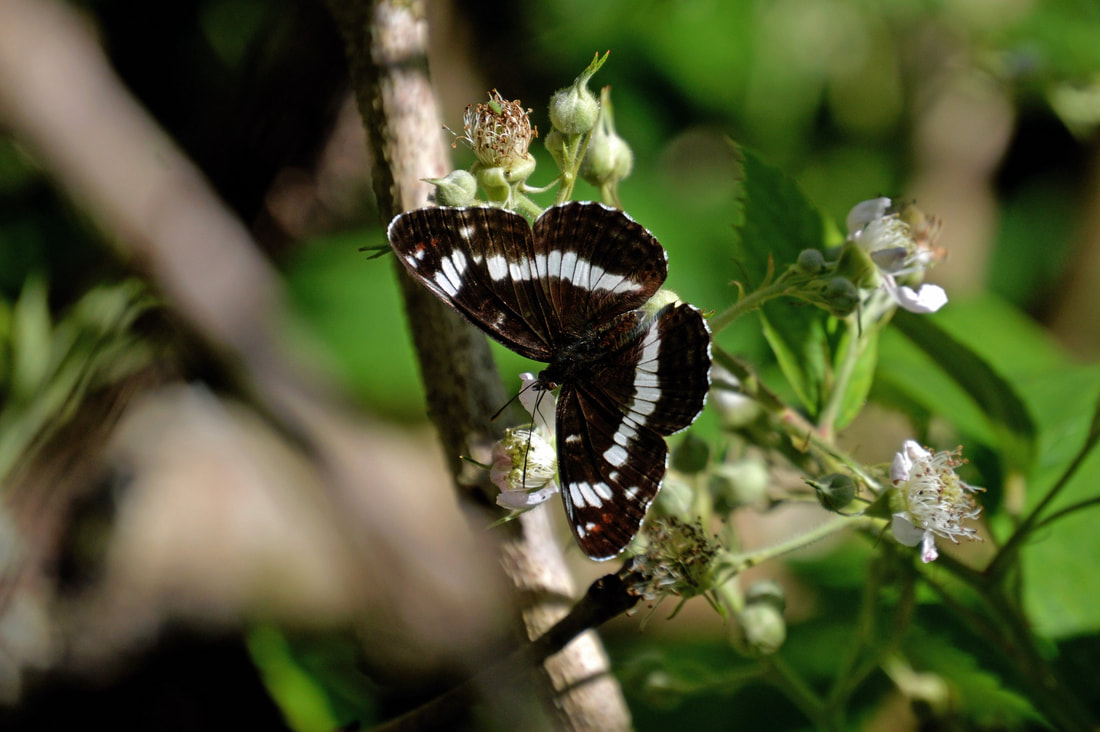

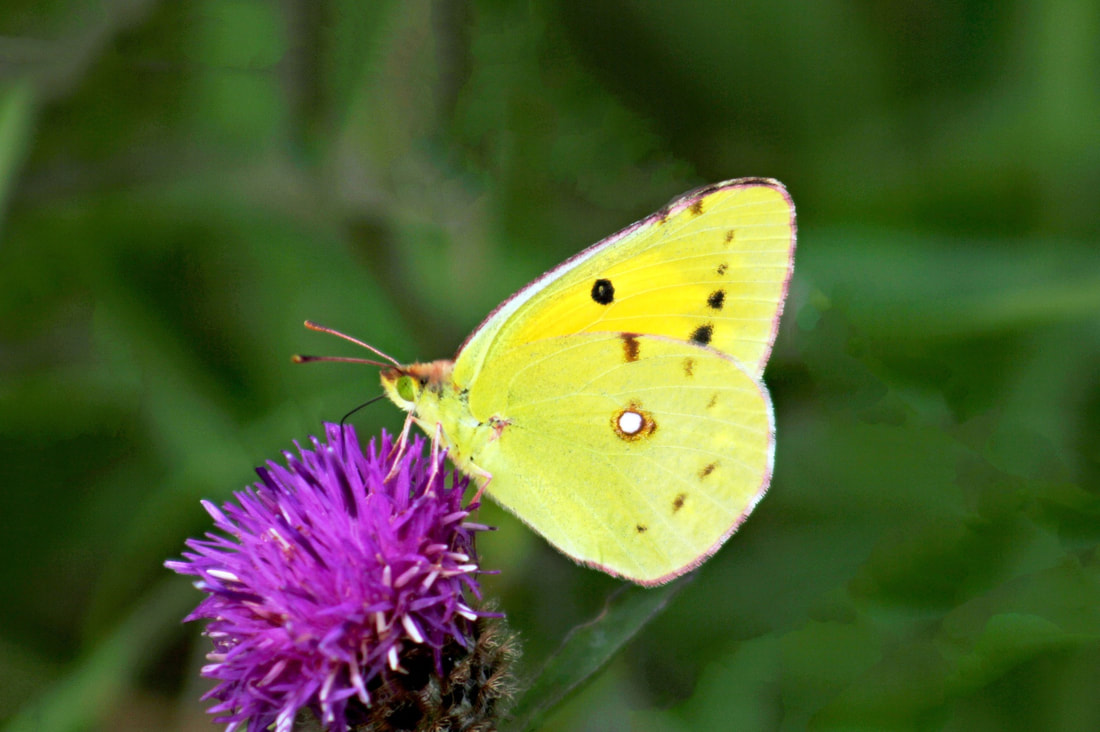
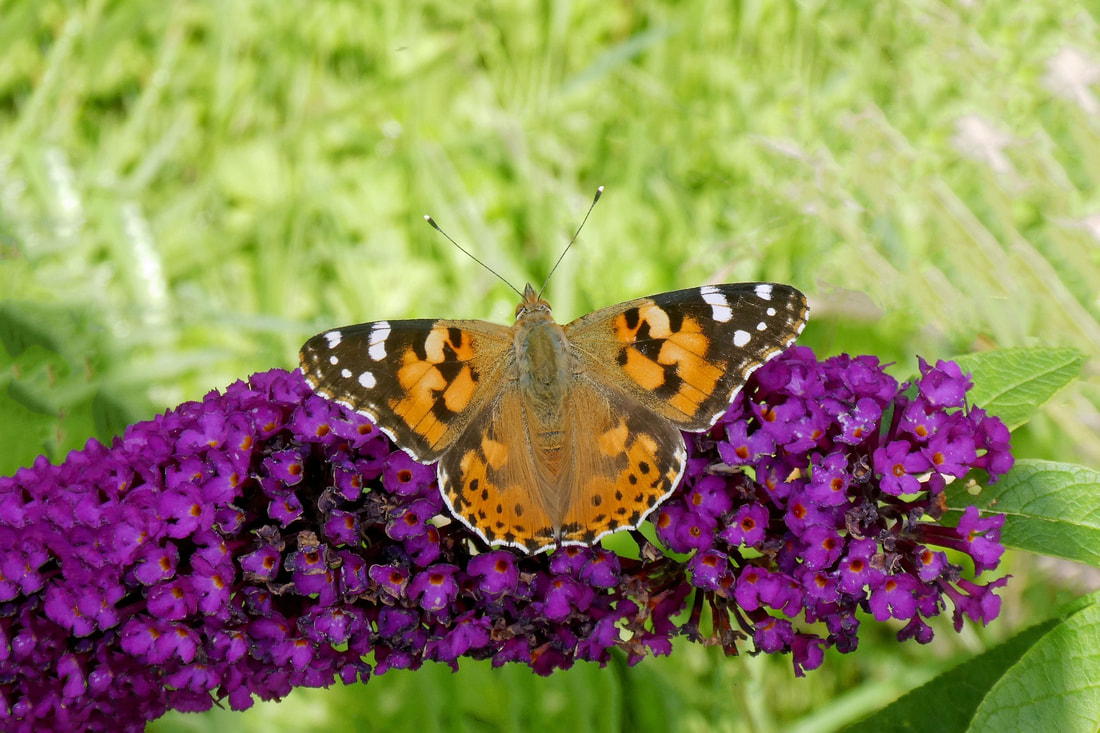
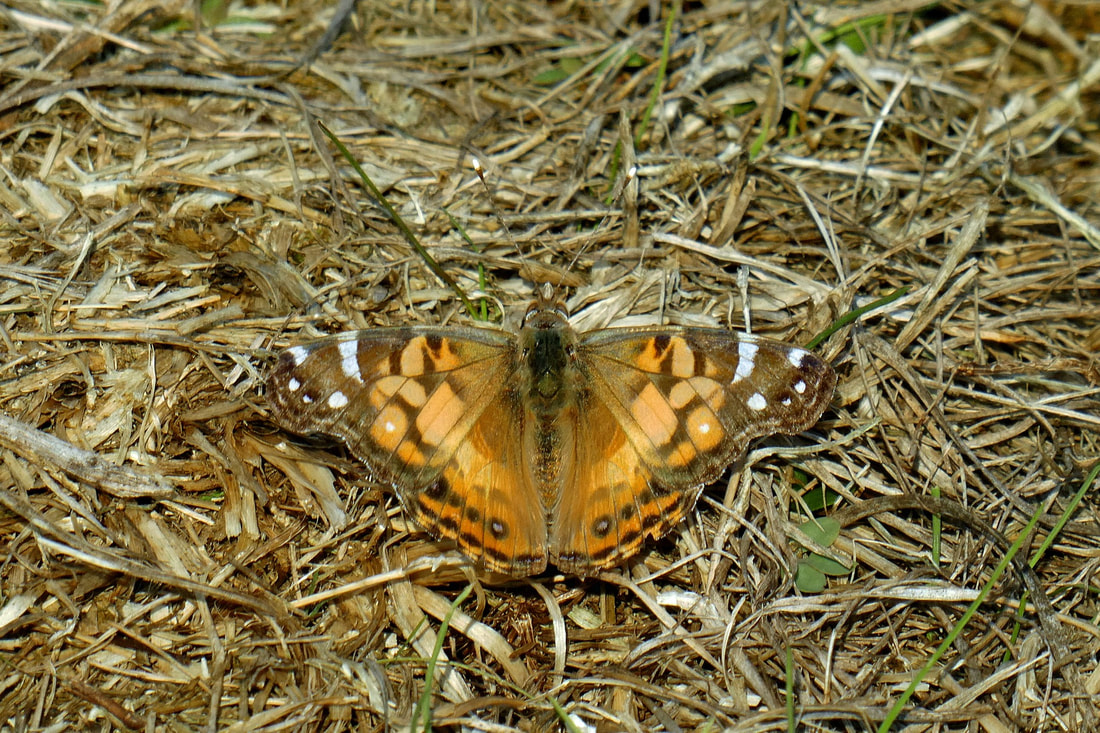
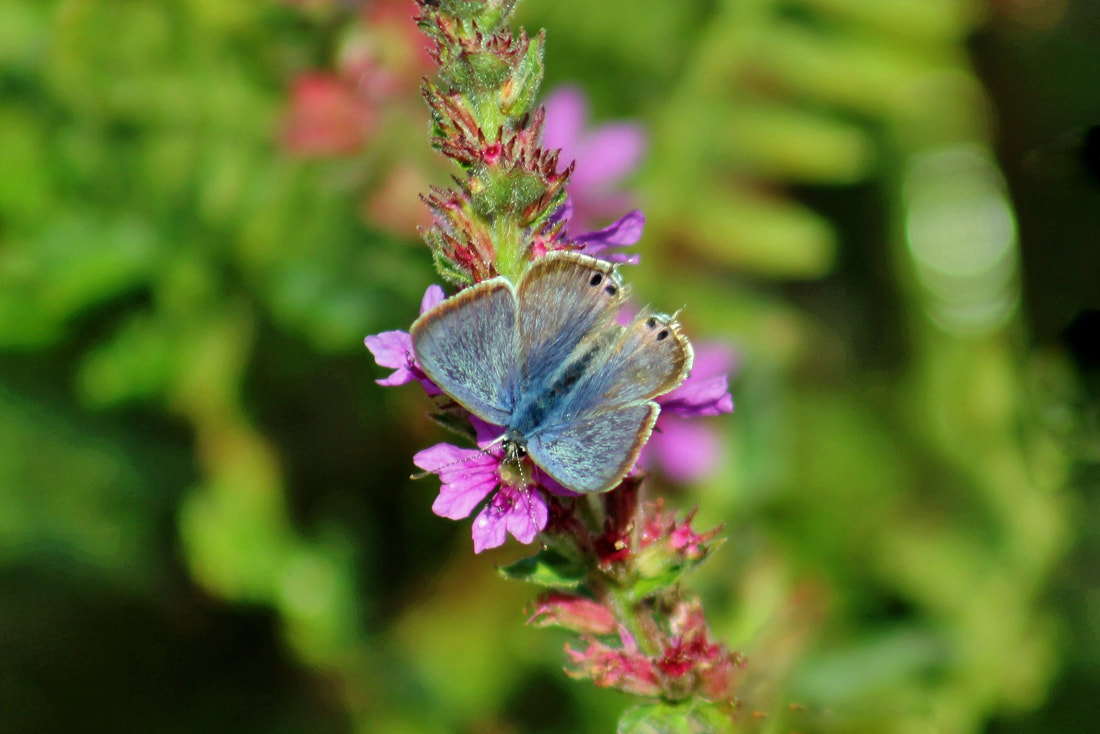
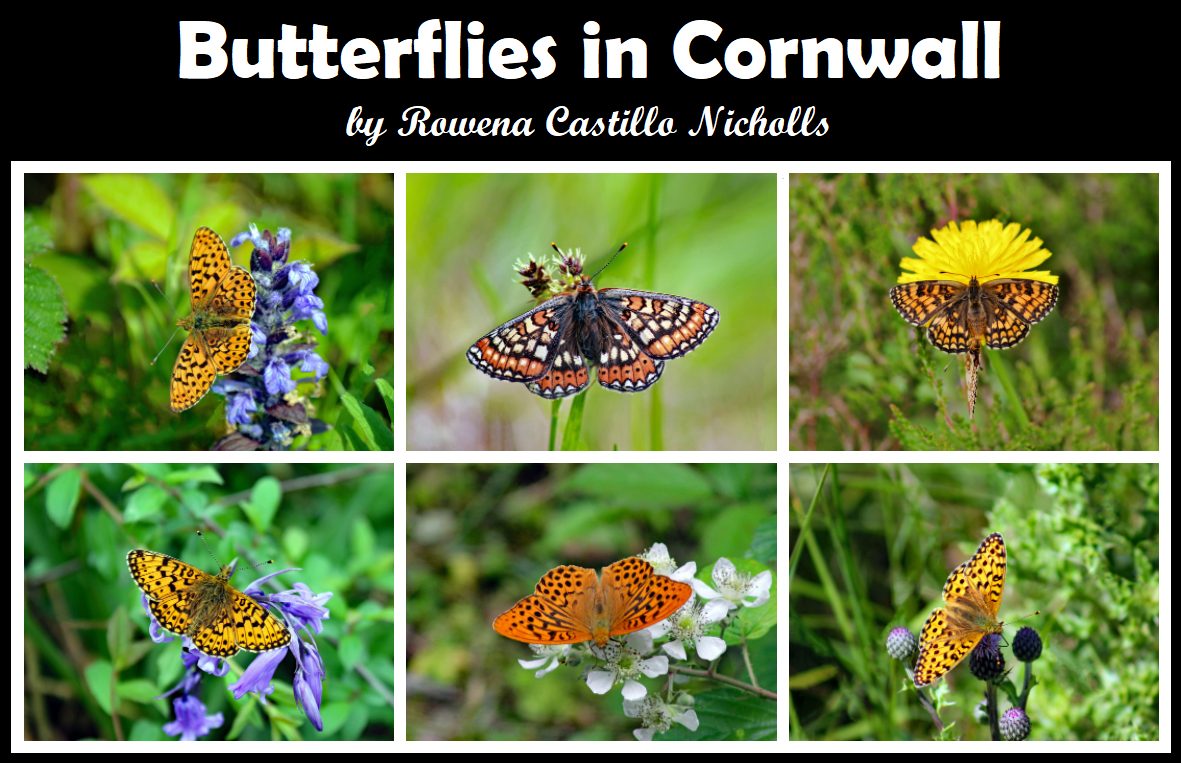
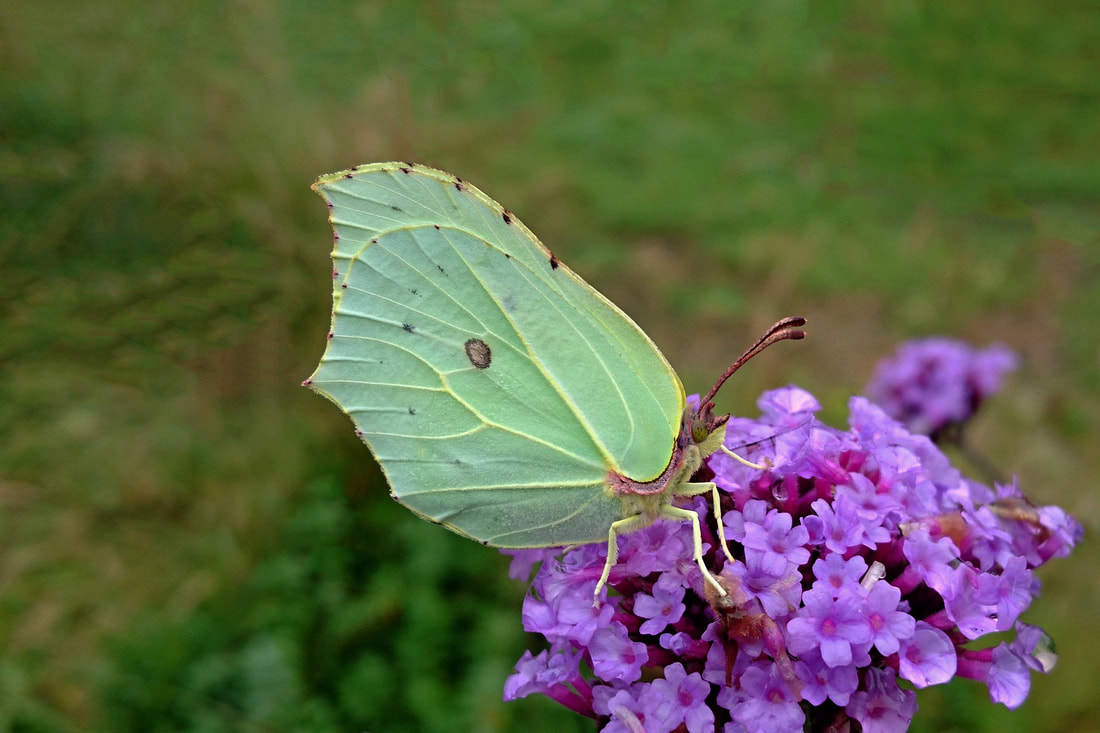
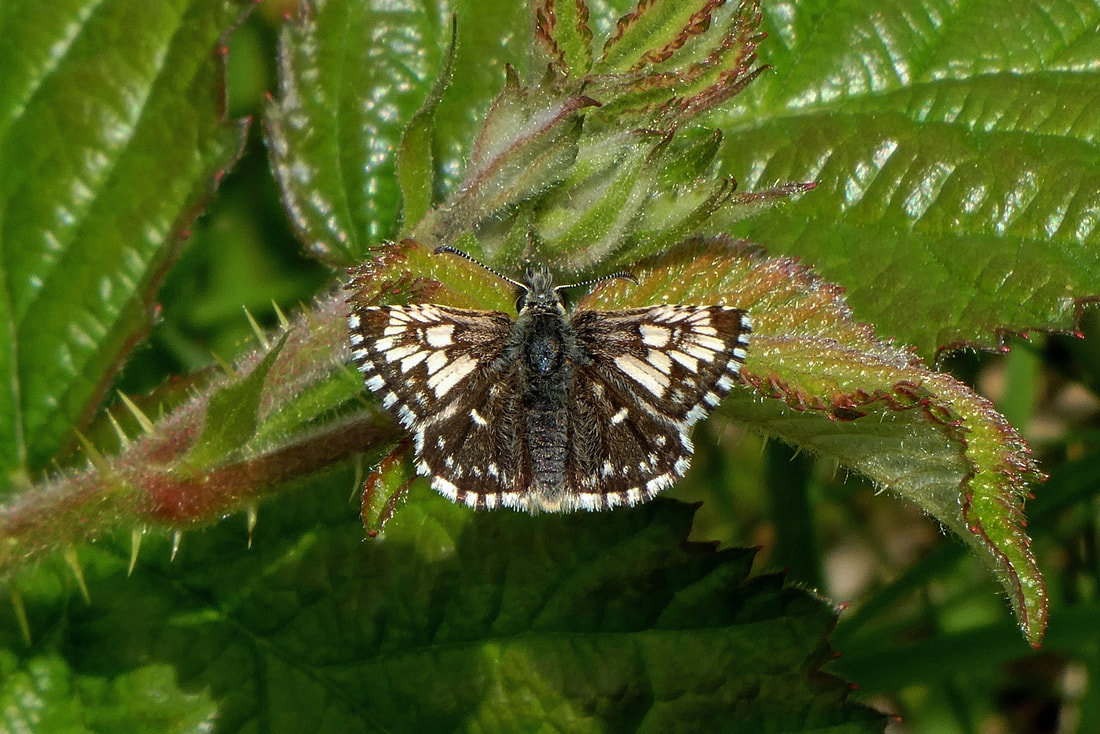
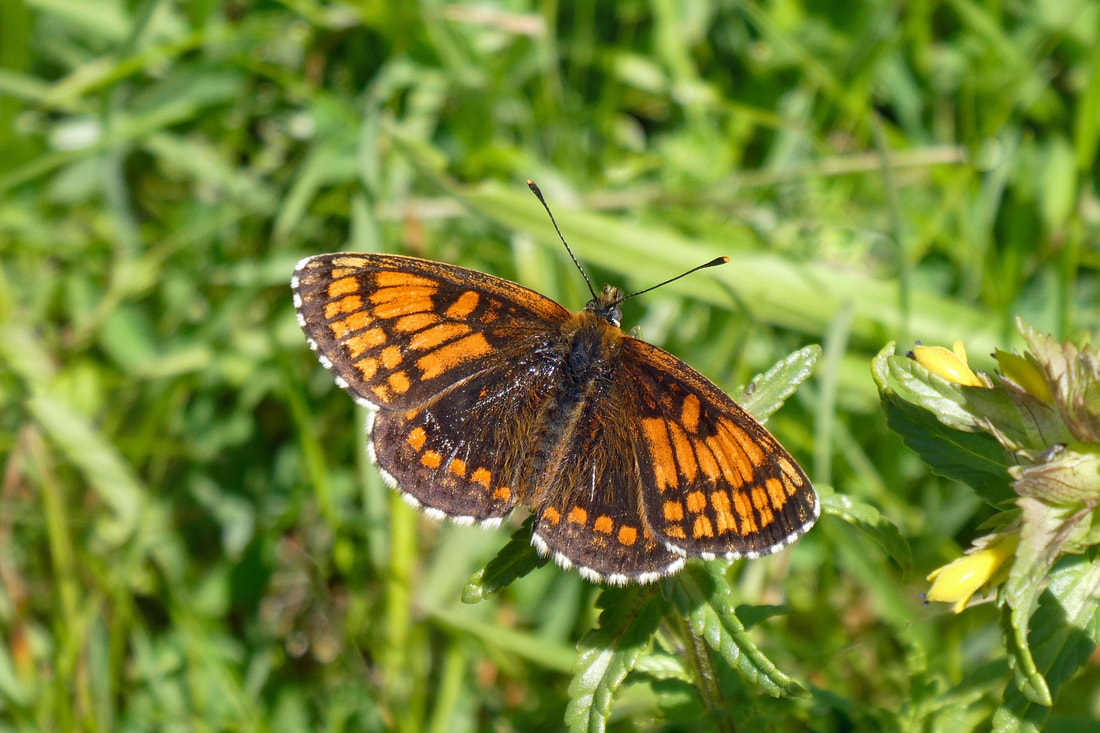

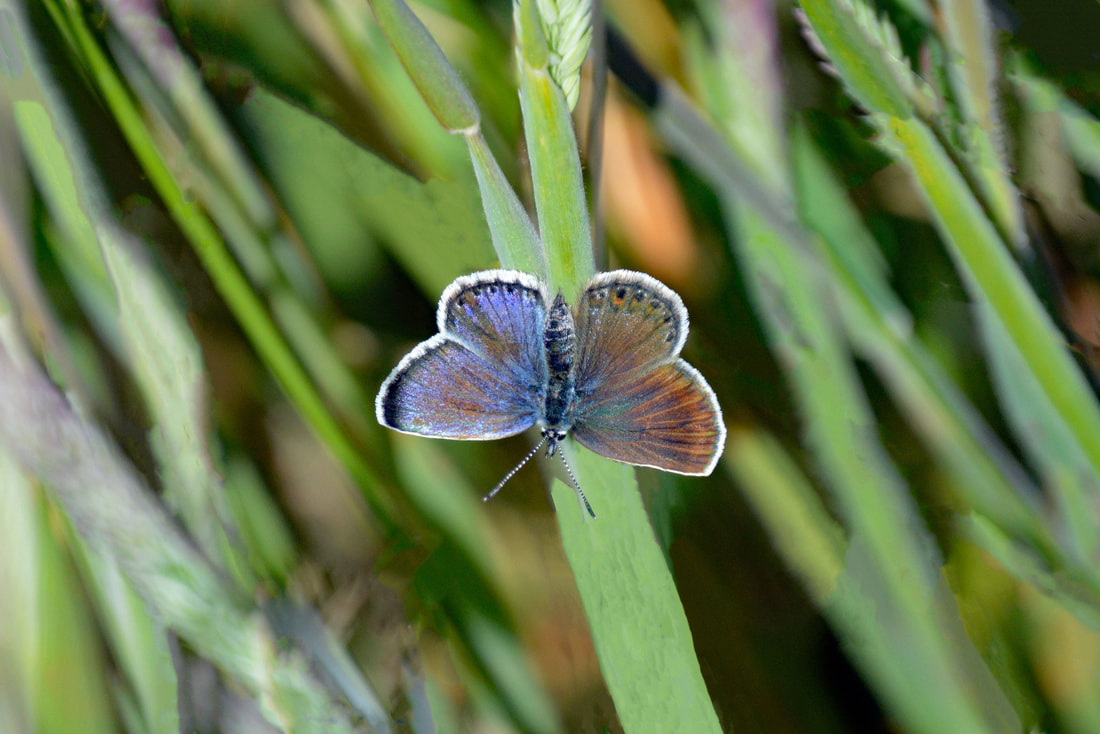
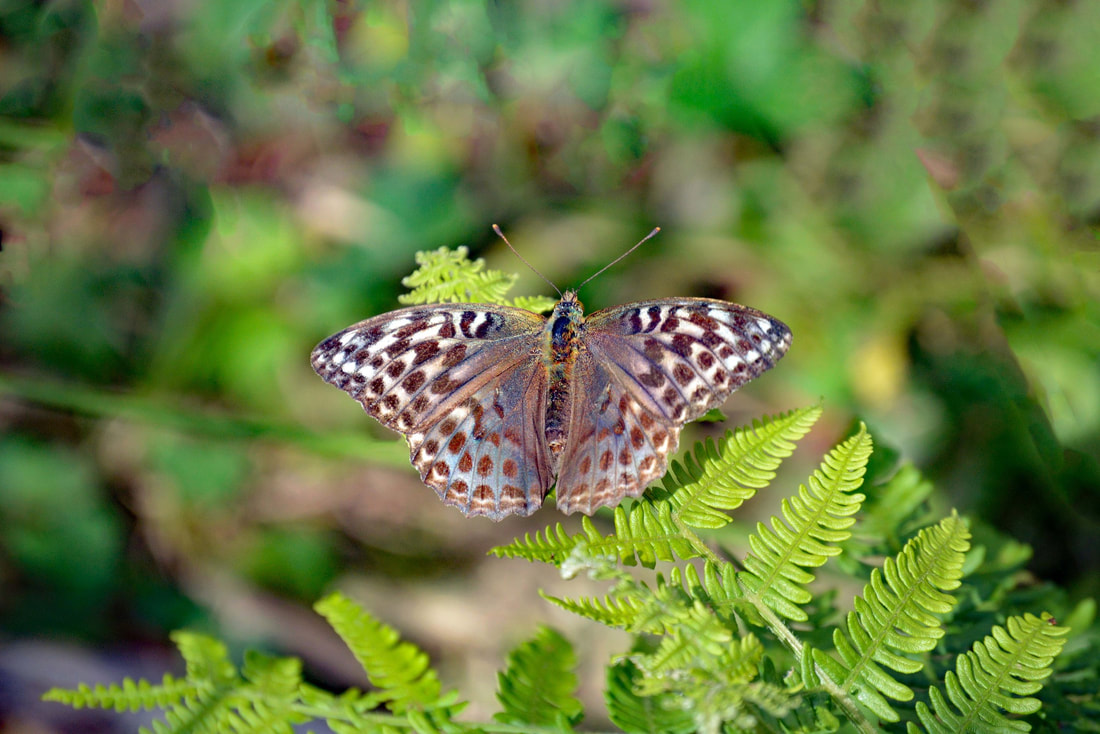
 RSS Feed
RSS Feed